Summary
- Dive into One UI features after setup for the best Samsung phone experience.
- Create customized routines in One UI to automate tasks like a pro.
- Use Good Lock to customize your phone from widgets to status bar icons.
Whether you choose a budget phone or one of the impressive Samsung tablets, you’ll use One UI, Samsung’s Android skin, found on all Galaxy devices. If you’re switching to One UI from an iOS device or another Android phone manufacturer like Google or Motorola, you’ll notice that Samsung packs a lot of features into its phones. So, where do you start?
We recommend familiarizing yourself with what One UI is and what it can do. After you finish the important steps of setting up your Samsung device, you’re ready to dive into all the features of One UI. To help you out, we collected the best features of One UI so that you can use the most exciting features of your Samsung phone or tablet.
1 Automate tasks with Routines
Routines (previously known as Bixby Routines) can be triggered when you connect to particular Wi-Fi or Bluetooth devices, when your Samsung Galaxy Watch detects a specific workout, when your battery drops below a certain percentage, and more. It’s Samsung’s IFTTT (If This Then That) implementation with an easy-to-use interface and a tight One UI integration. Let’s check out some of the routines you can use to automate tasks like a pro.
You can create a routine called Slow charging that turns off the fast wired charging function during sleep hours to preserve battery health. When the routine ends, fast charging kicks in again and tops off the phone for when you wake up. You can set up another routine called Migraine that dims your phone display, turns off sound, and activates a blue light filter. You can check all the built-in routines yourself.
- Go to your Settings.
- Select Modes and Routines.
- Tap Routines.
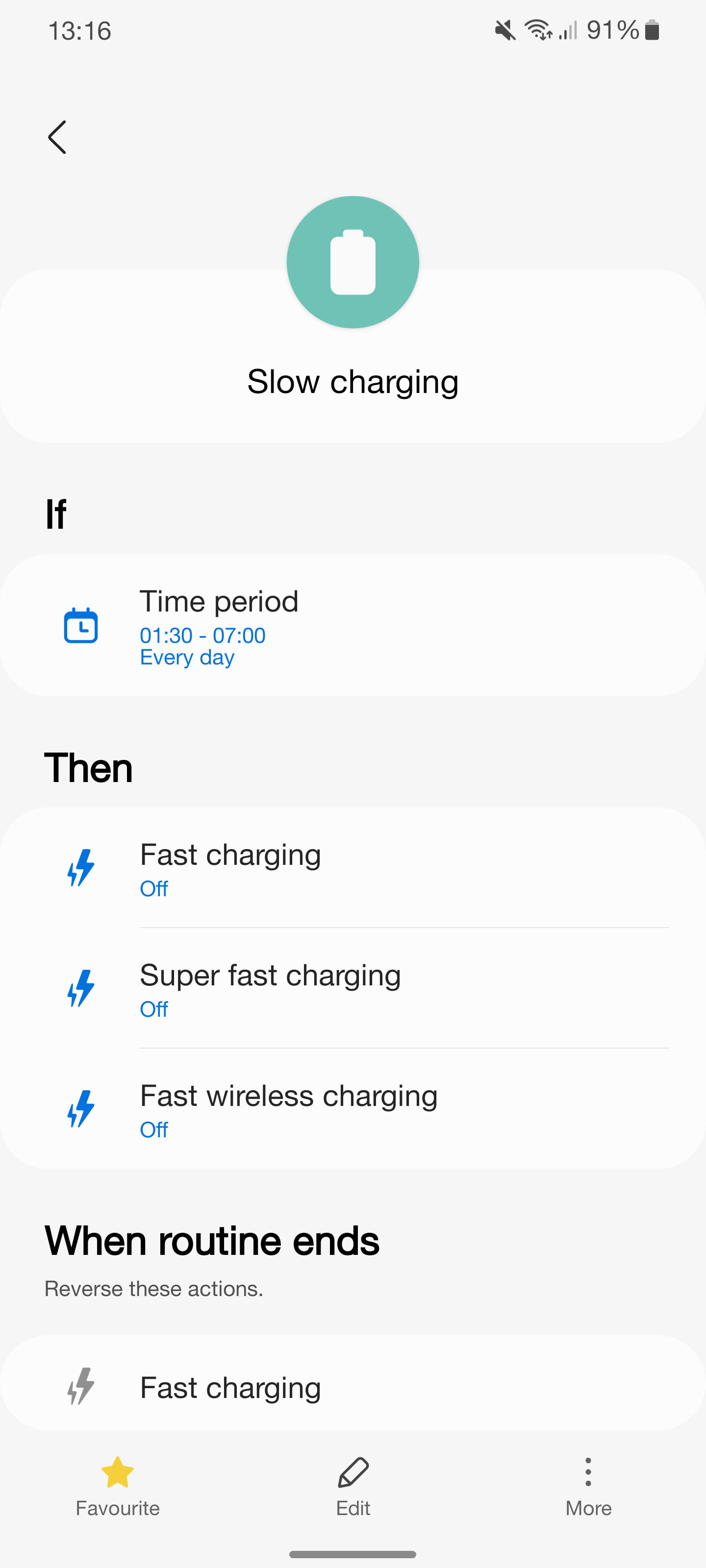
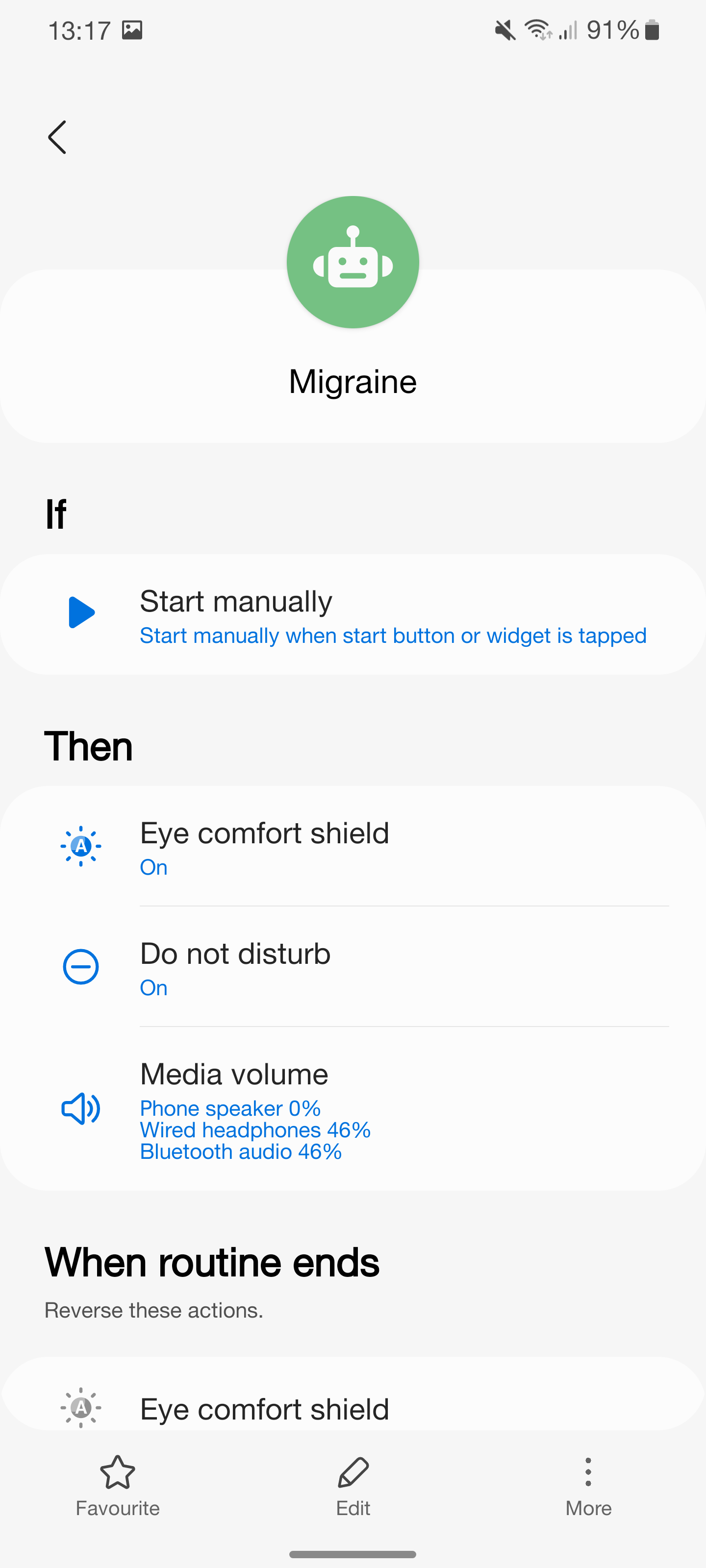
While Routines are an effective way of automating tasks, we recommend exploring Google Assistant Routines, which provides more comprehensive automation features.
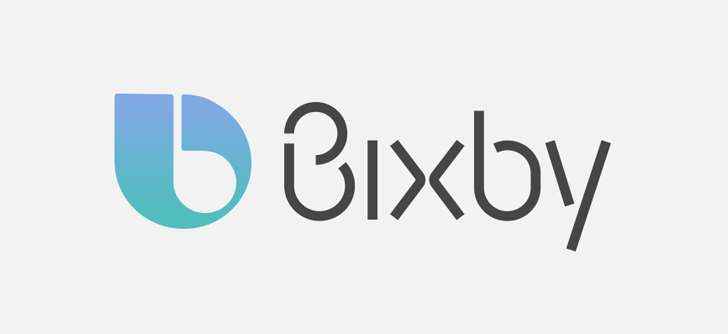
Samsung Bixby: What it is and how to use it
Samsung’s digital voice assistant is impressive, with deep system settings and third-party app integration
2 Open apps in pop-up windows
As well as opening two apps side-by-side like other smartphones, Samsung lets you open them in free-form windows that you can move, resize, and minimize. These windows are similar to Google’s chat bubbles but more helpful and reliable. Unlike bubbles, pop-up windows work with every app that supports Multi Window, not only messaging apps. Although they may not be suitable for phones like the small (but powerful) Samsung Galaxy S24, pop-up windows are helpful for foldables like the Galaxy Z Fold 4.
There are many use cases for this. For example, you can watch a YouTube video while using other apps without paying for YouTube Premium. You can open YouTube in pop-up mode, resize the window, play the desired video, and tap full-screen. When you do so, YouTube plays the video full-screen within its window, giving you more flexibility than a split screen.
- Swipe up and hold from the bottom to open the Recent Apps menu.
- Tap or long press the app icon at the top.
- Select Open in the pop-up view.
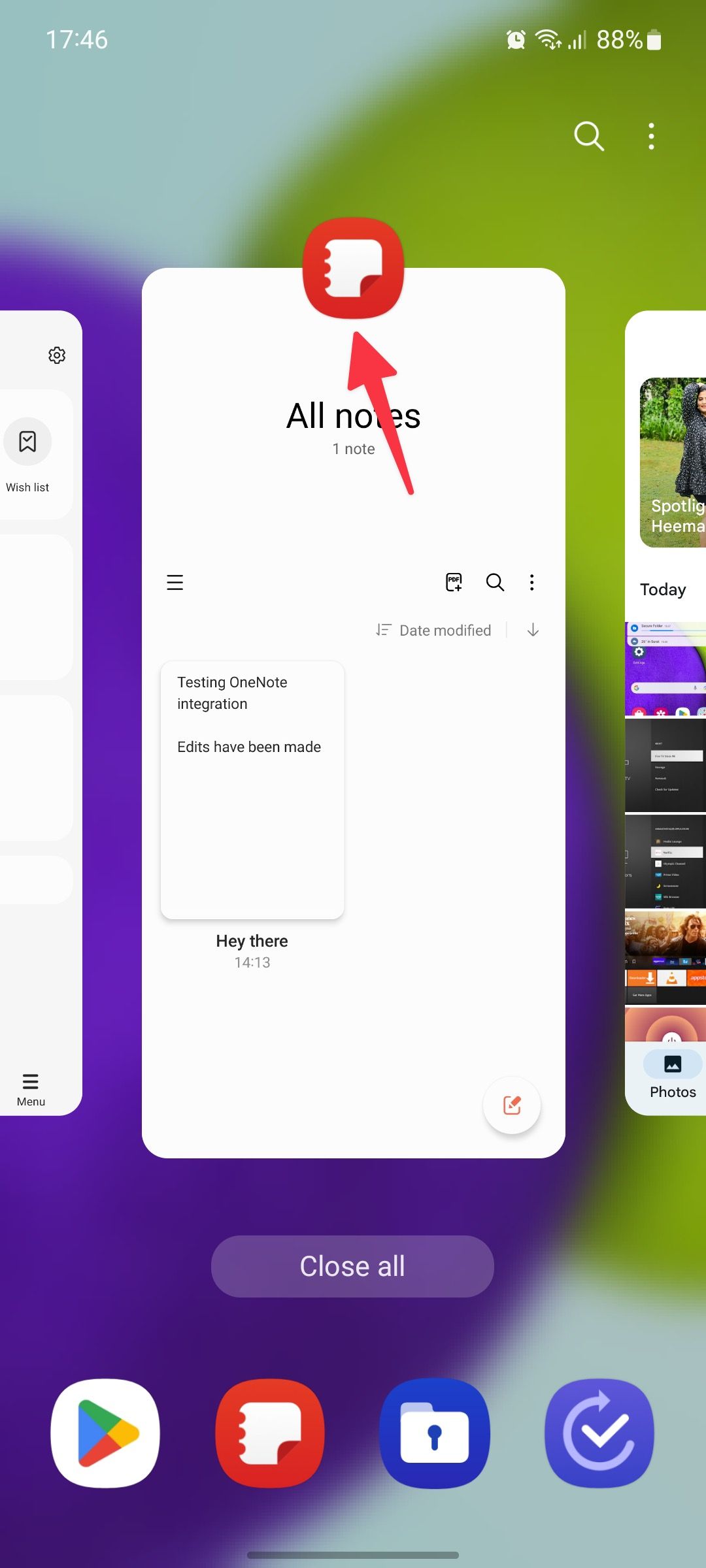
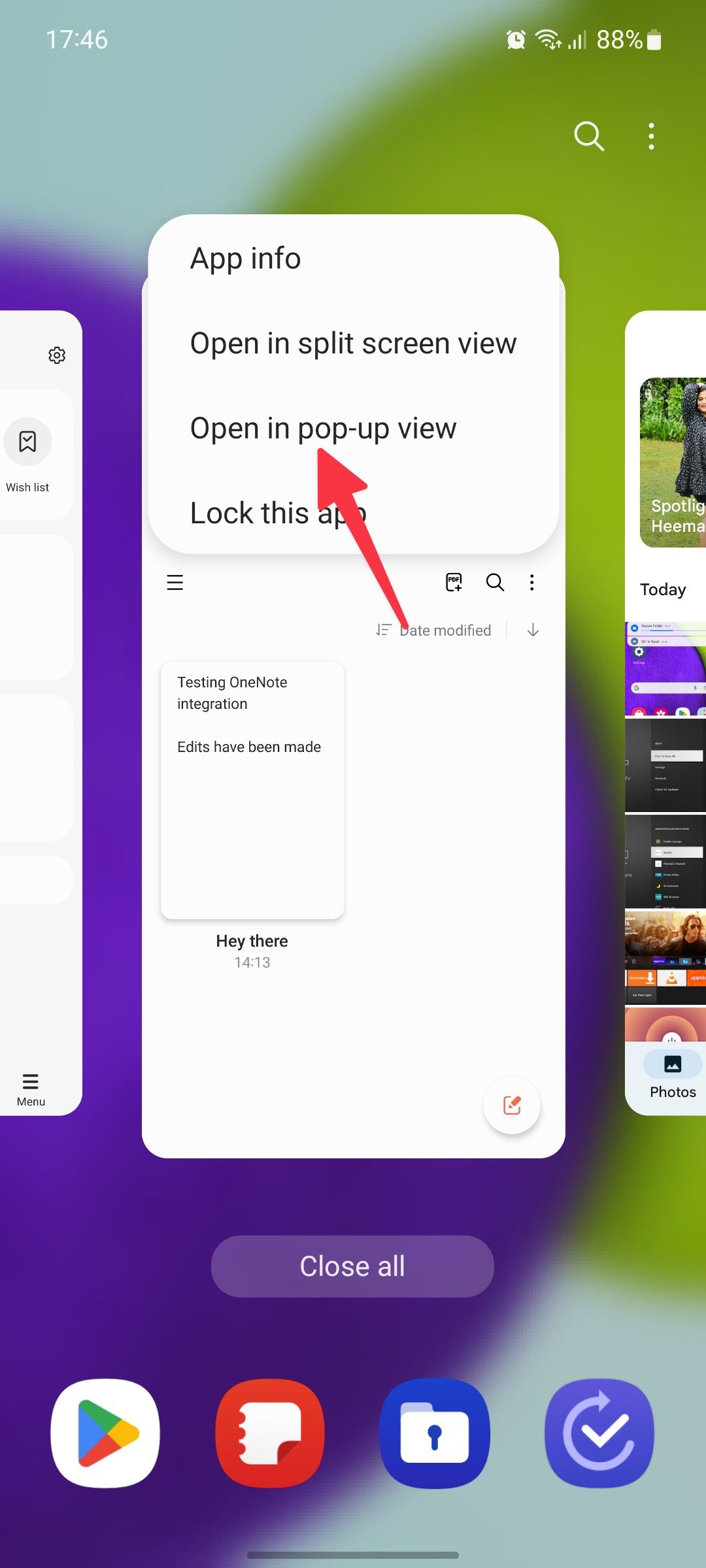
- Tap the horizontal bar at the top to close, minimize, and expand the pop-up view.
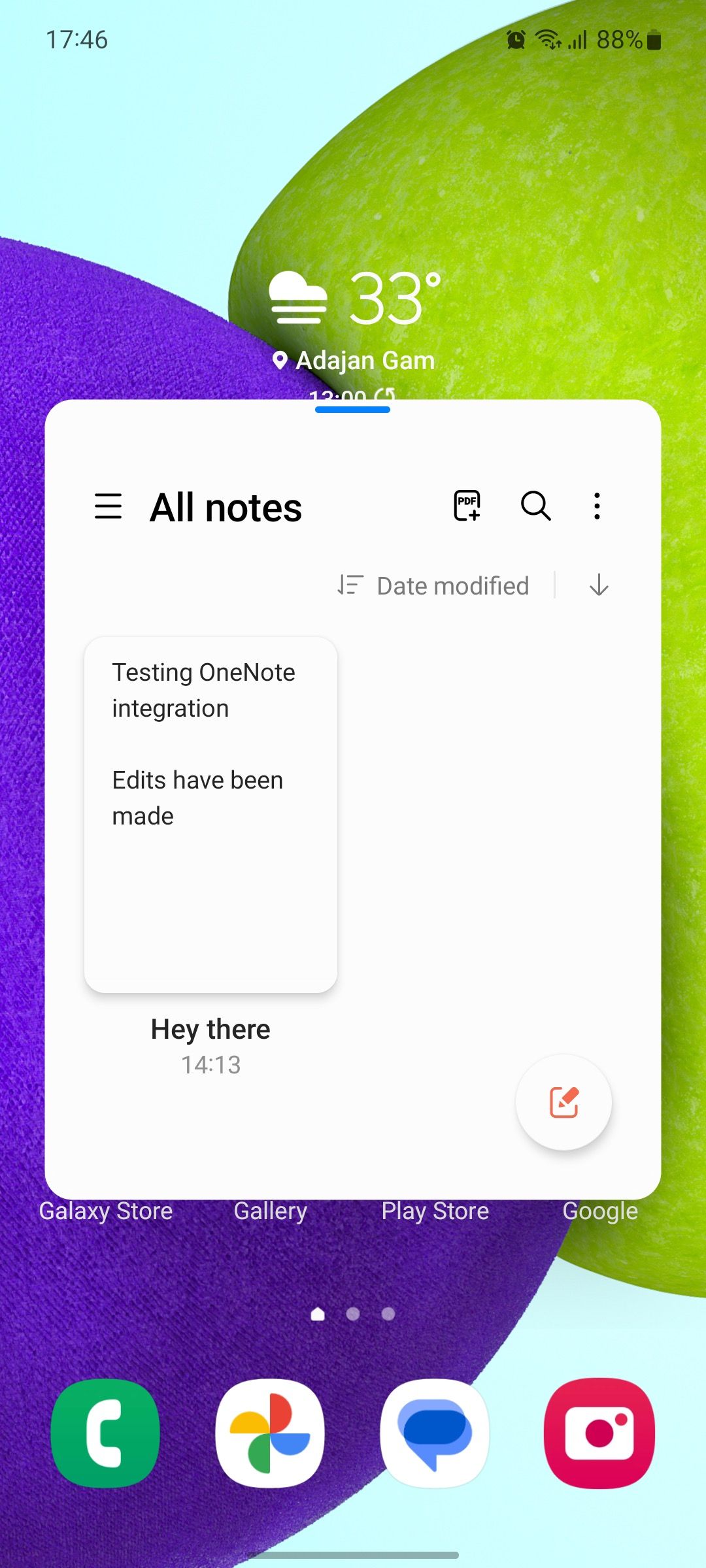
You don’t need to use split-screen mode to browse apps side by side. With features like RAM Plus, you can keep more apps open in the pop-up view.
3 Use Good Lock to customize every part of your phone
The Good Lock app isn’t technically part of One UI. Still, it’s only compatible with Samsung’s devices. This app lets you install modules that can tweak nearly every aspect of your phone, from widgets on your lock screen to how your Settings app is organized.
Good Lock is available through the Galaxy Store and is free to use. There are a lot of modules to explore, and we have a comprehensive Good Lock modules guide that walks you through everything found in the app.
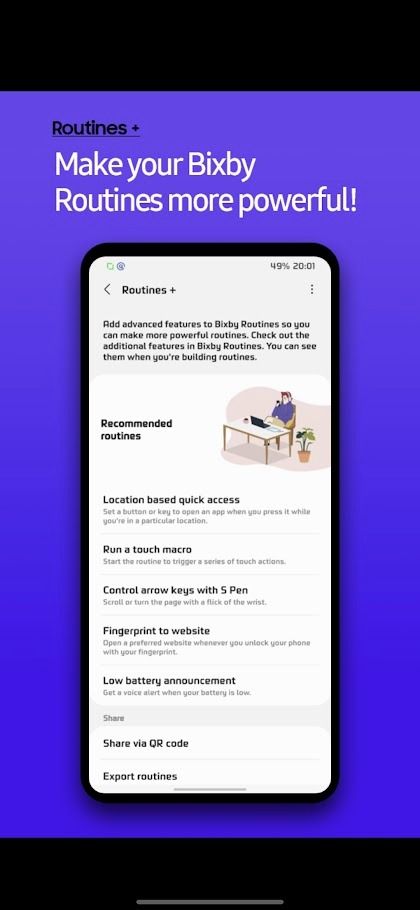
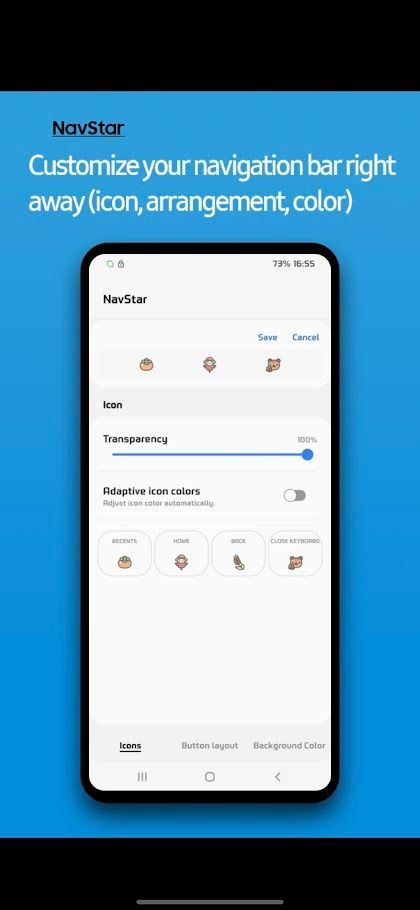
4 Hide status bar icons
When Google released Android 6.0 Marshmallow, one of our favorite features was the System UI Tuner, which allowed you to modify parts of your system. Google removed the UI Tuner in subsequent Android releases, but Good Lock is ready to fill the void if you use a Samsung phone.
Good Lock replicates many things the old UI Tuner did. If you always keep your phone on vibrate and connect to a smartwatch, you don’t need the status bar icons to tell you that. Switching them off makes everything look cleaner. If you’re in the US, some Samsung phones, such as the Galaxy S23 Ultra, indicate that NFC is switched on. That, too, can be turned off. To try this, download QuickStar in the Good Lock app and look for the Visibility of Indicator Icons menu.
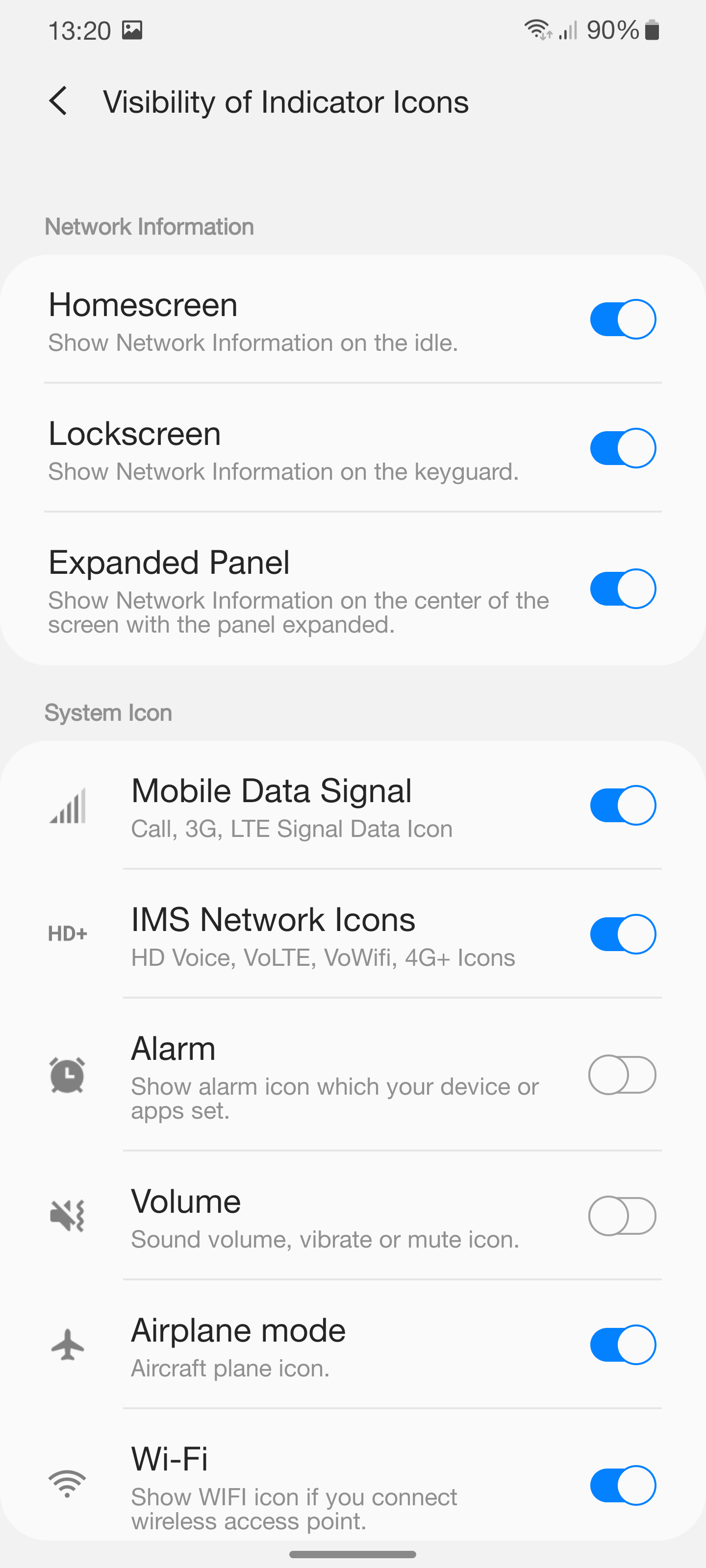
5 Stop the screen from timing out
The Google Pixel 4 came with Screen Attention, which keeps the screen on while looking at it, overriding the typical timeout limit. While this was a first for Pixels, Samsung has been doing the same thing since 2012 when it debuted Smart Stay on the Galaxy S3 before rolling out the feature to older phones.
That was nine years ago. It’s been renamed and buried in a sub-menu.
- Open Settings on your Samsung phone.
- Scroll to Advanced features and open Motions and gestures.
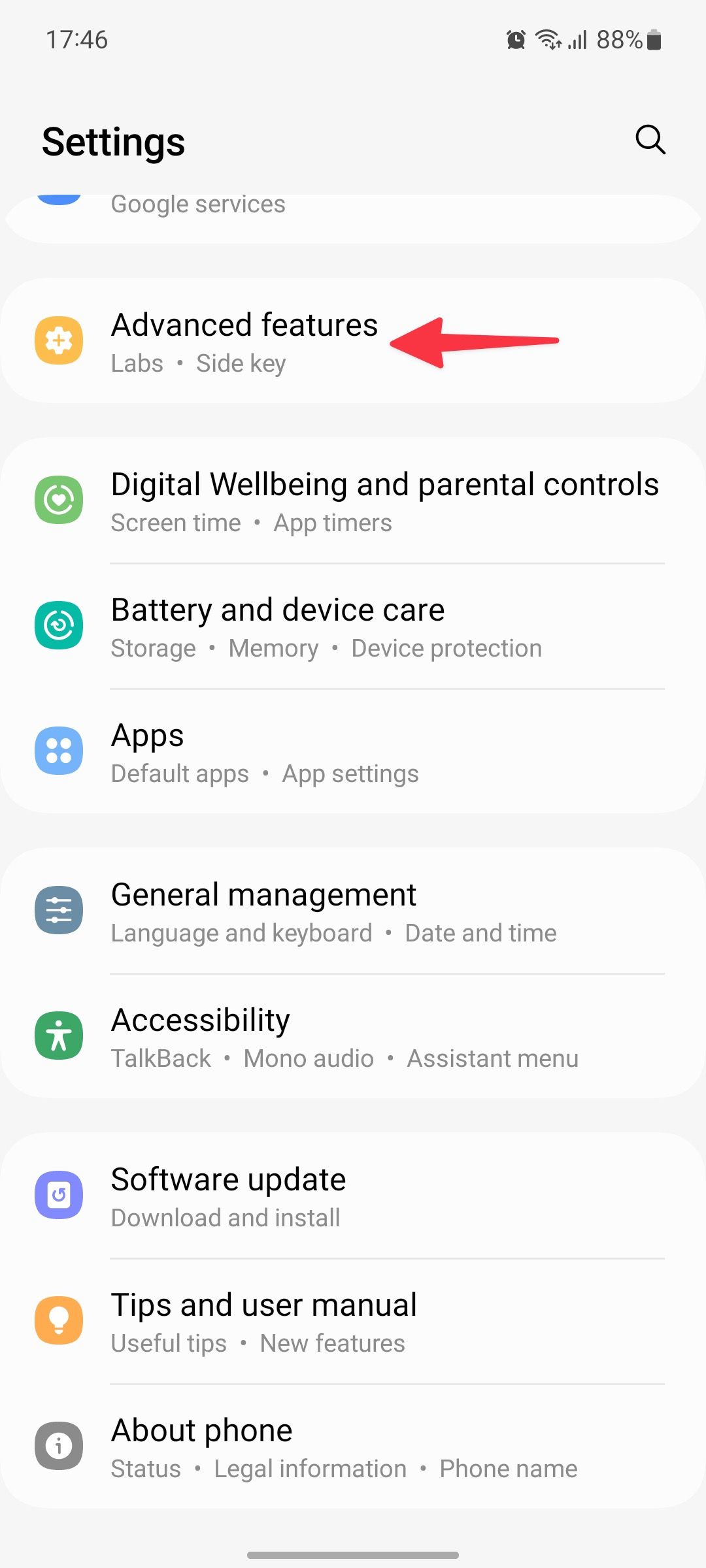
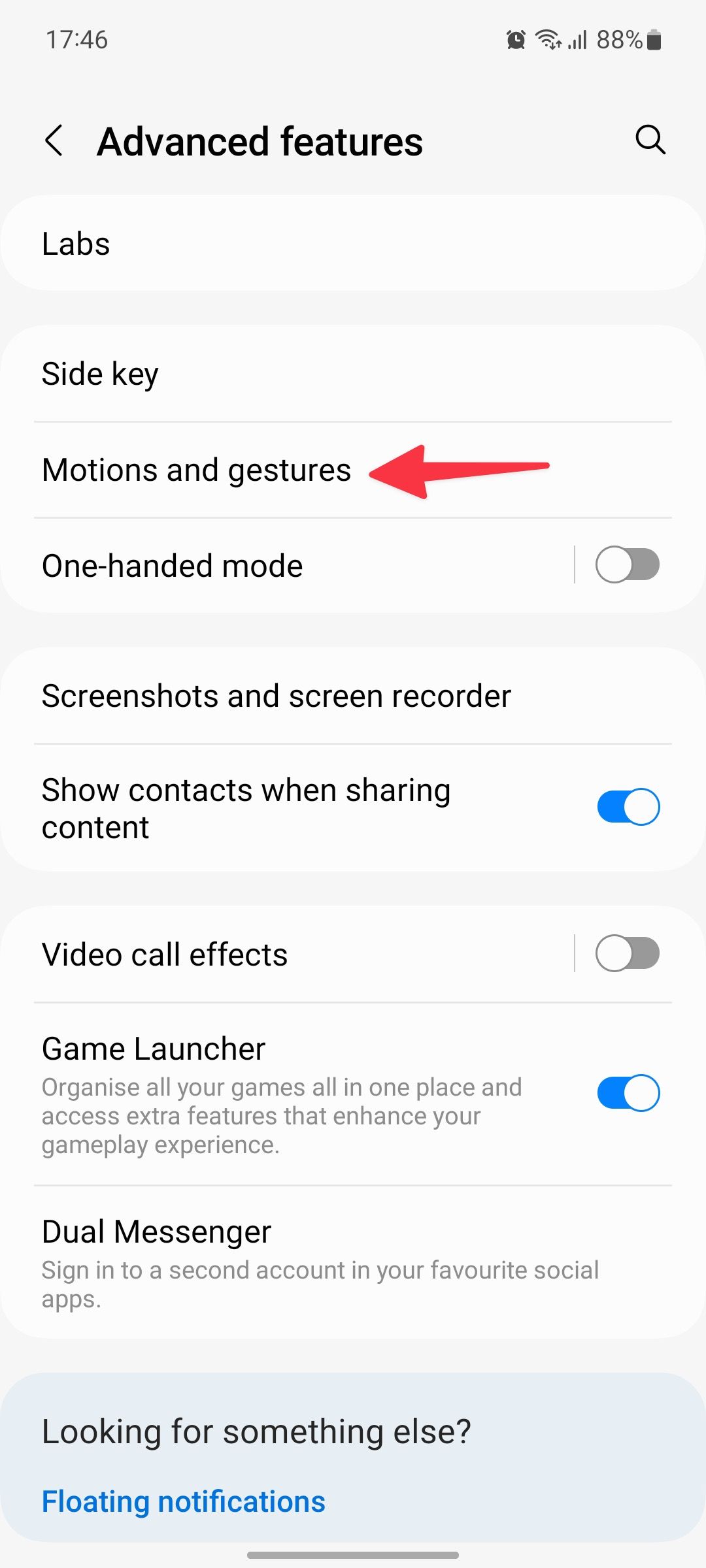
- Turn on the Keep screen on while viewing toggle.
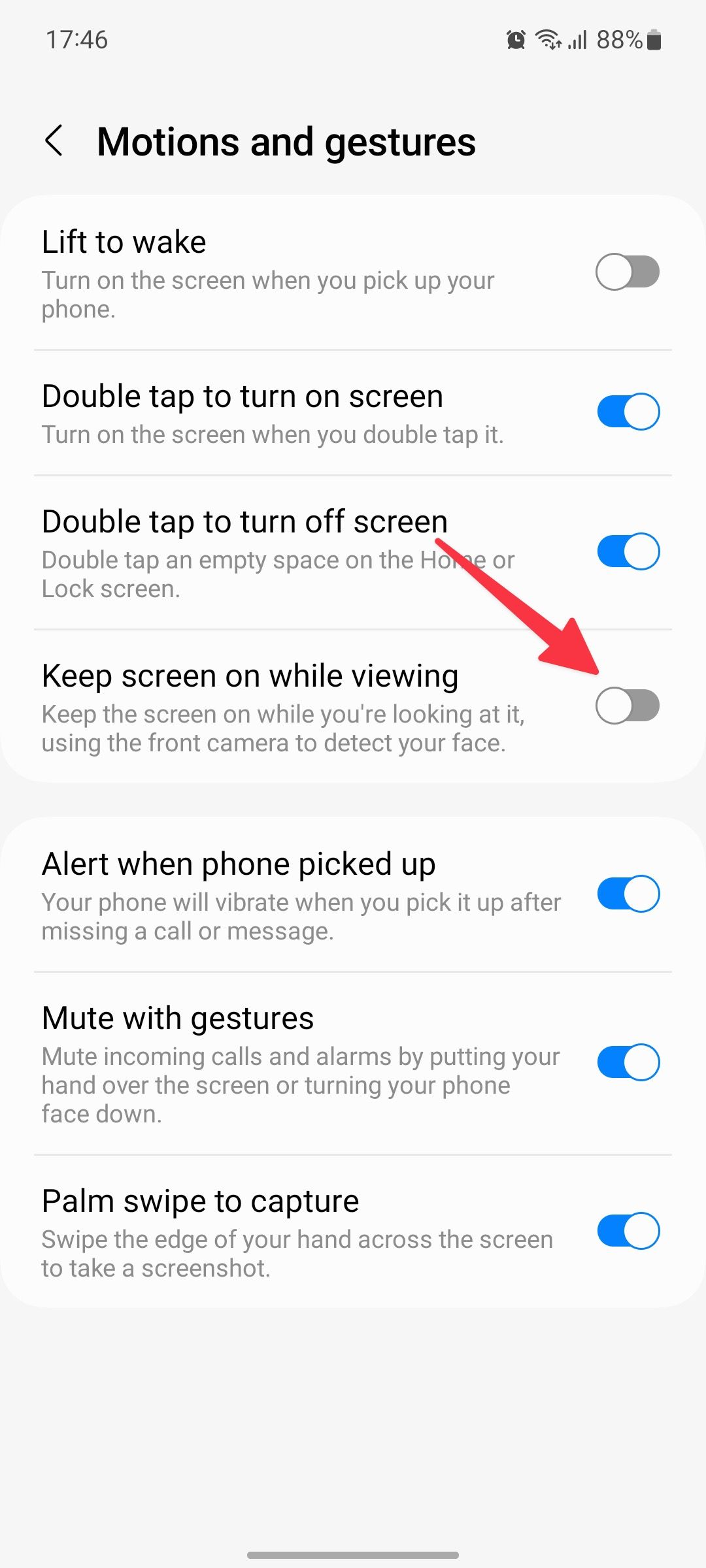
6 Keep your frequently used apps front and center
Navigating through dozens of installed apps in the Sharesheet can be tiring and tedious. However, you can edit the Sharesheet and keep your frequently used apps at the top. Apple also offers the same feature on iOS.
- Open your Sharesheet, and tap the pencil icon in the upper-right corner.
- Drag and drop to arrange them, and pin your favorite apps at the top.
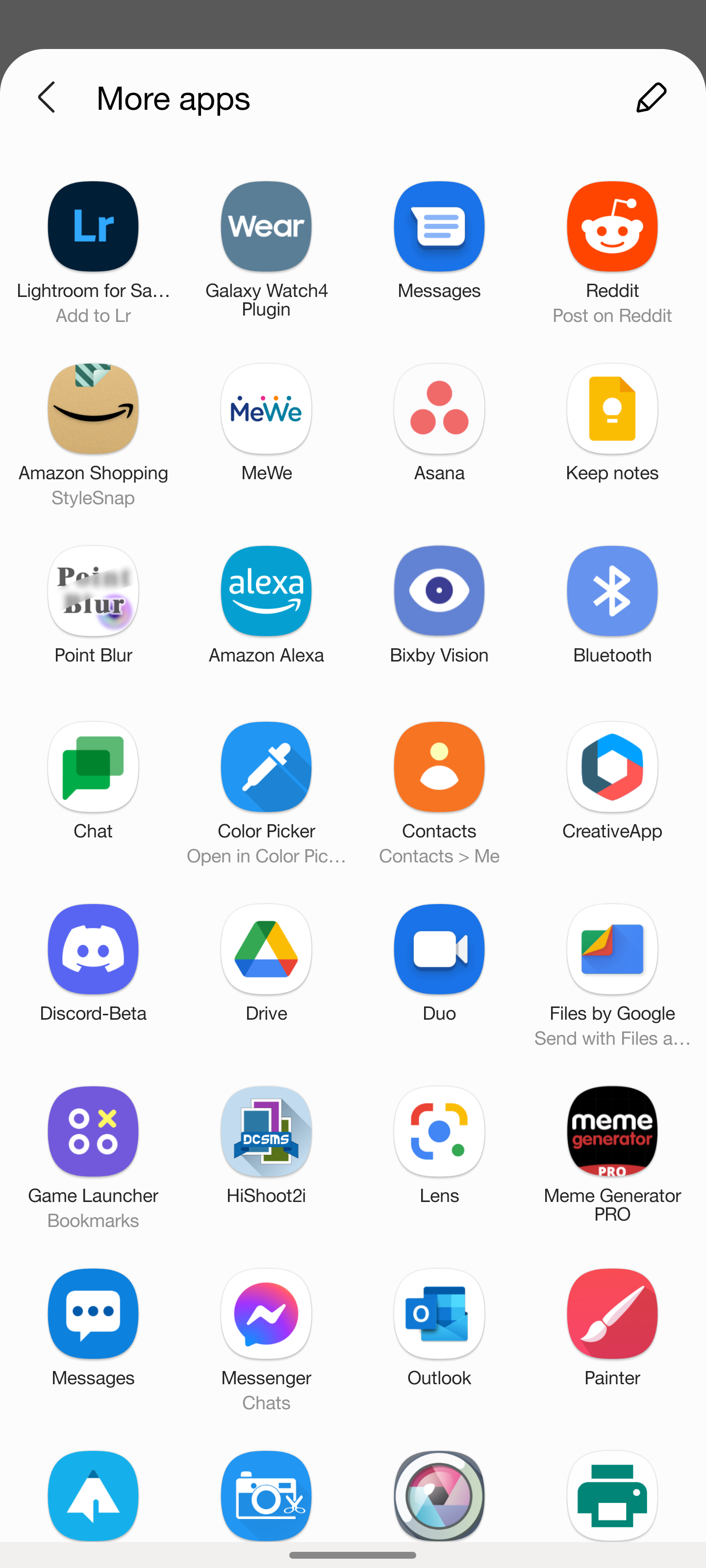
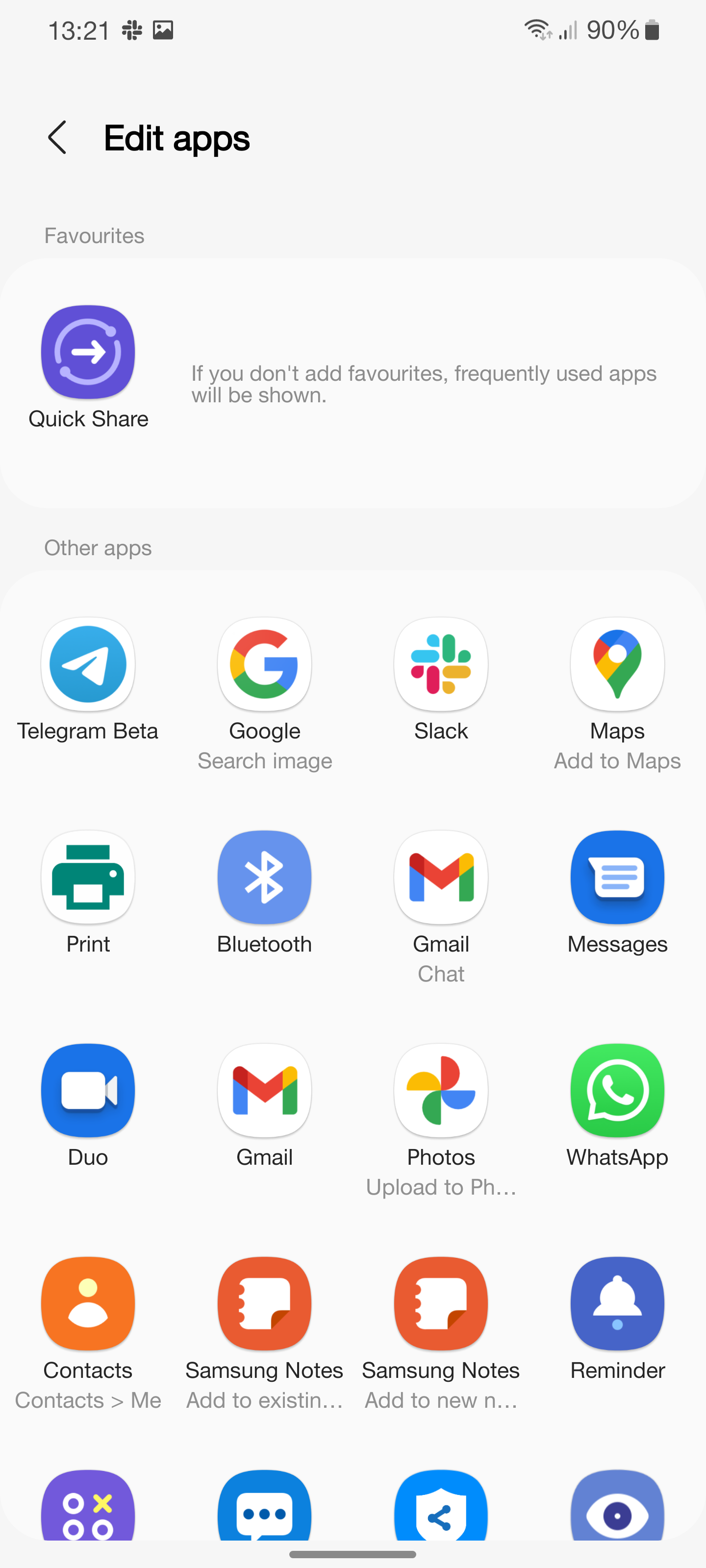
- The next time you share something, your preferred apps appear above all the others for quicker access.
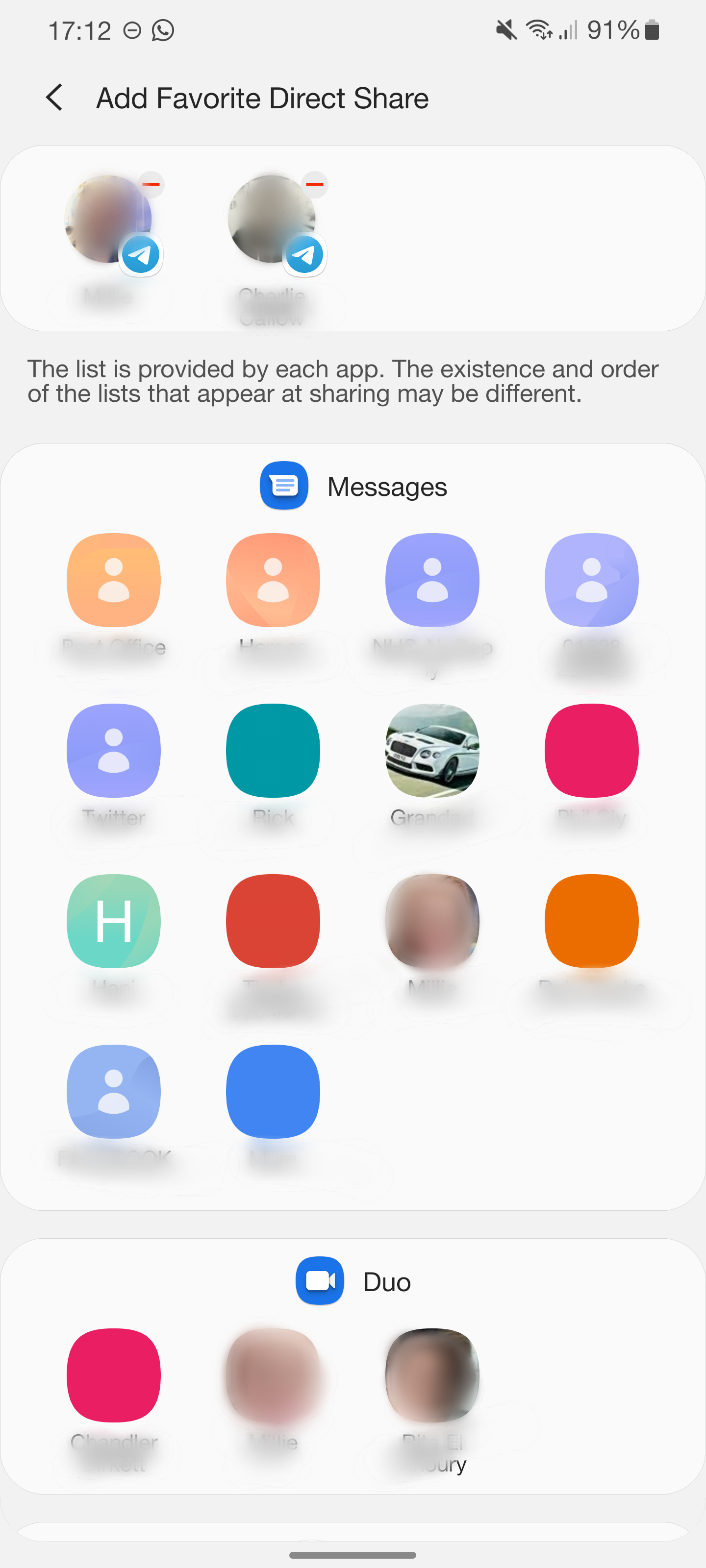
7 Make pop-up notifications less obtrusive
Pop-up notifications take up a lot of room at the top of your screen, which can be annoying if you’re watching something. Although you could switch them off, Samsung offers a compromise between everything and nothing.
- Go into your Settings menu and tap Notifications.
- Select Notification pop-up style.
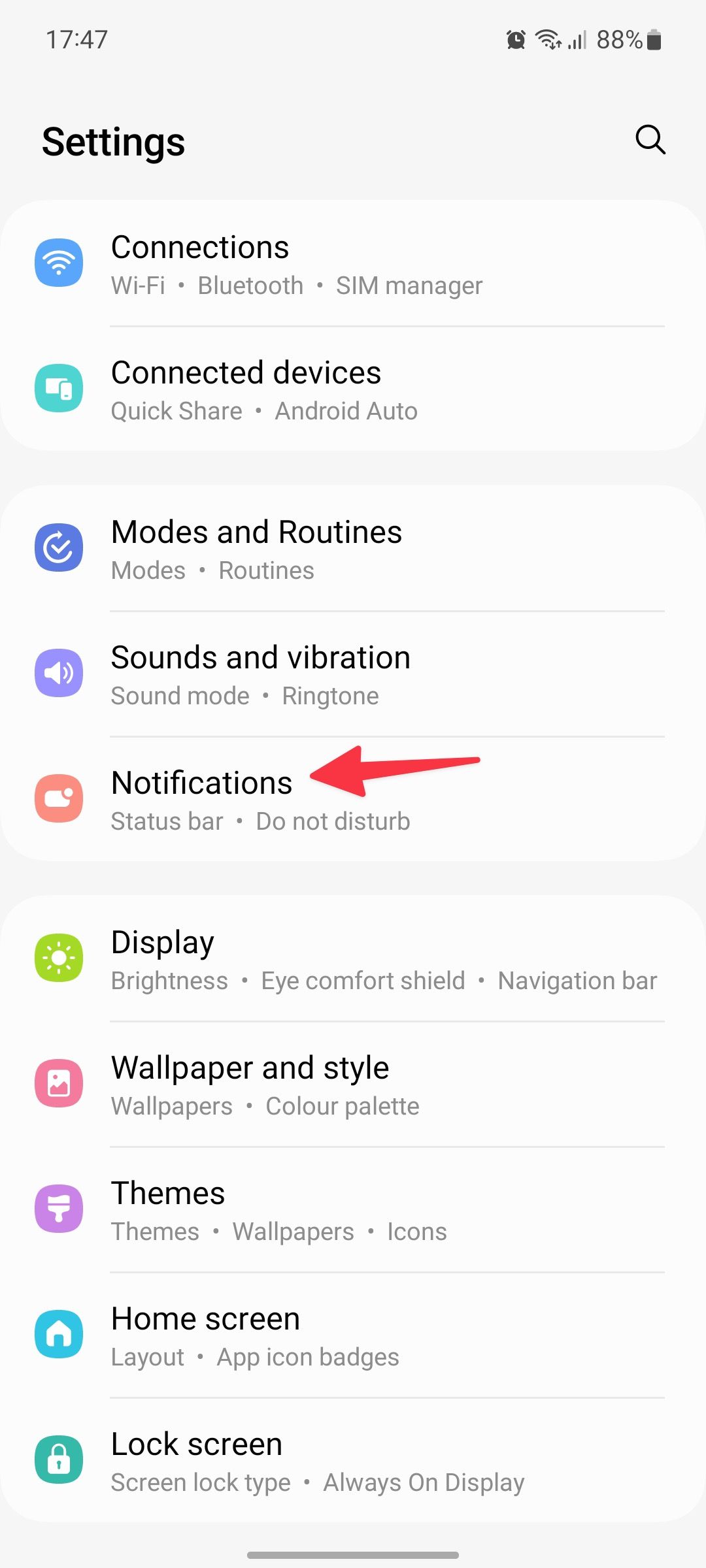
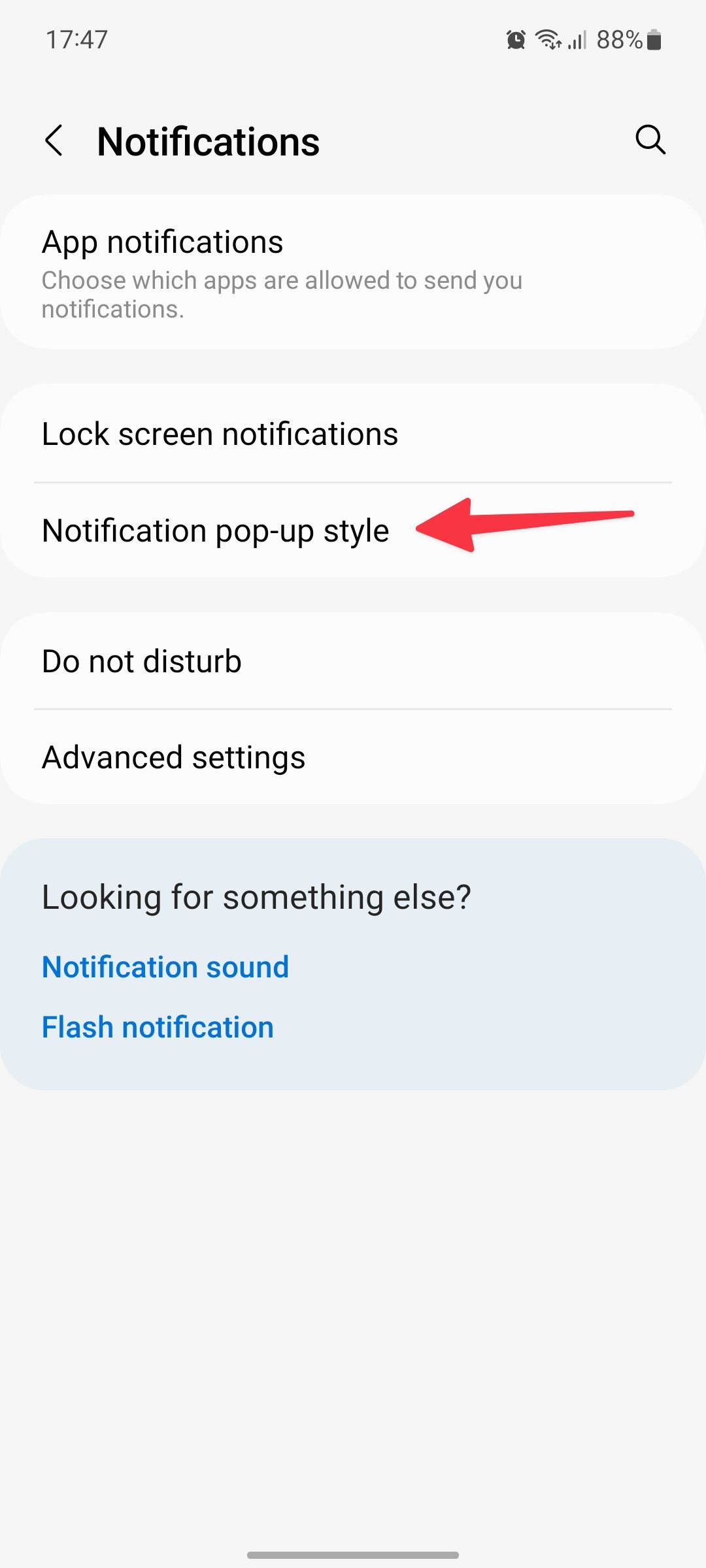
- Choose the default Detailed notifications or the compact Brief ones. The advantage of using the Brief option is that you can expand notifications to show more details.
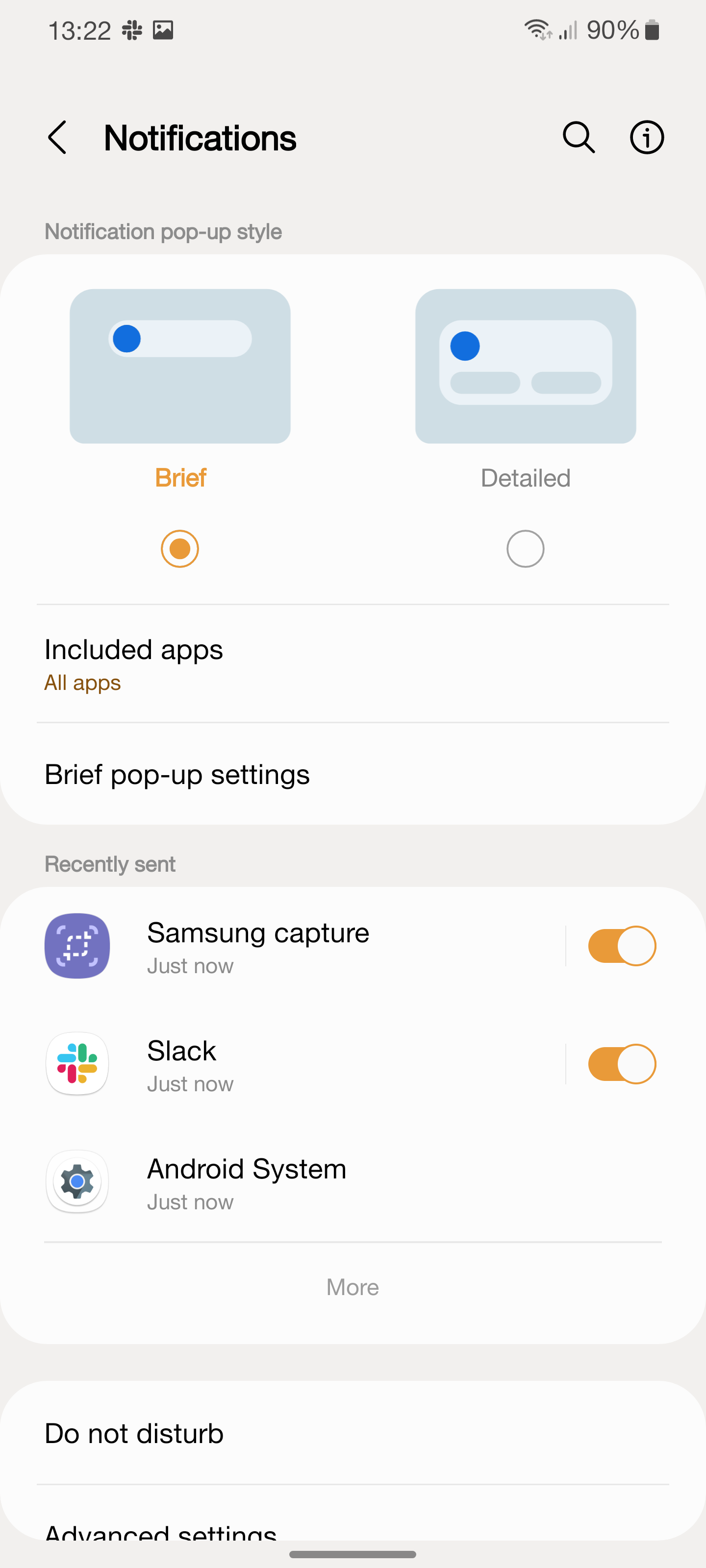
8 Change your lock screen shortcuts
Some people never use the lock screen shortcuts, while others always use them. If you aren’t using them because you don’t like the default Phone and Camera shortcuts on the lock screen, use the steps below to replace them with other apps and options.
- Open Settings and scroll to Lock Screen.
- Select your Lock screen.
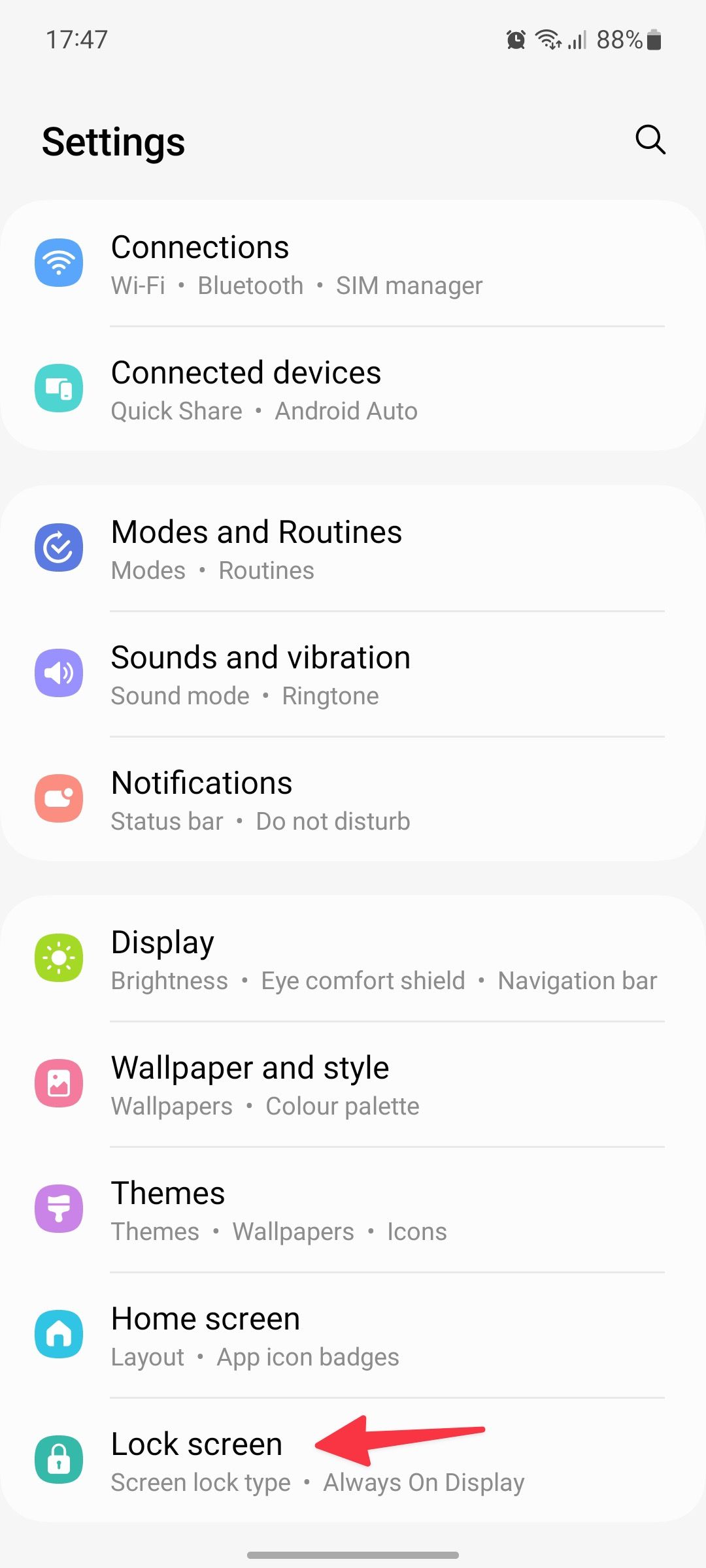
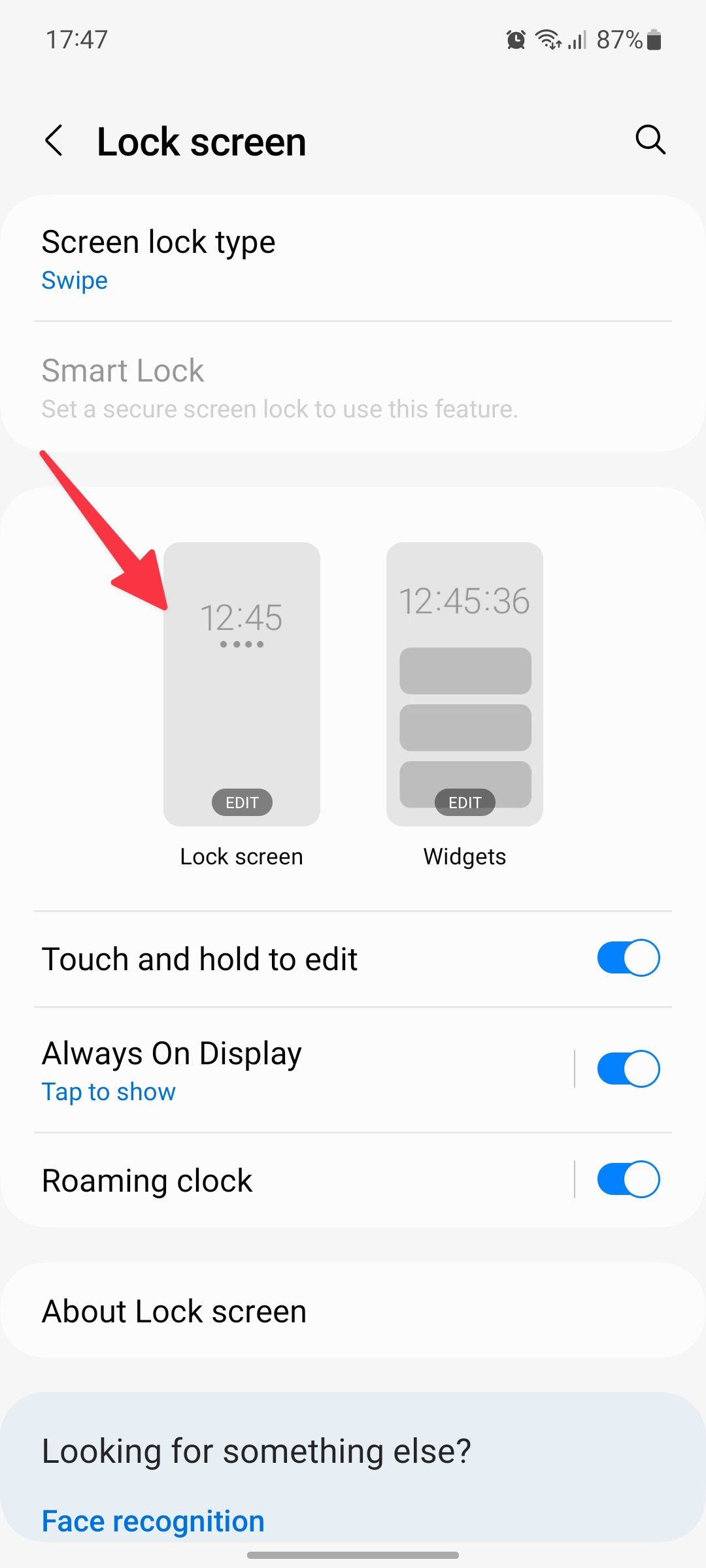
- Tap the lower-left shortcut and replace it with another option. Repeat the same for the lower-right corner.

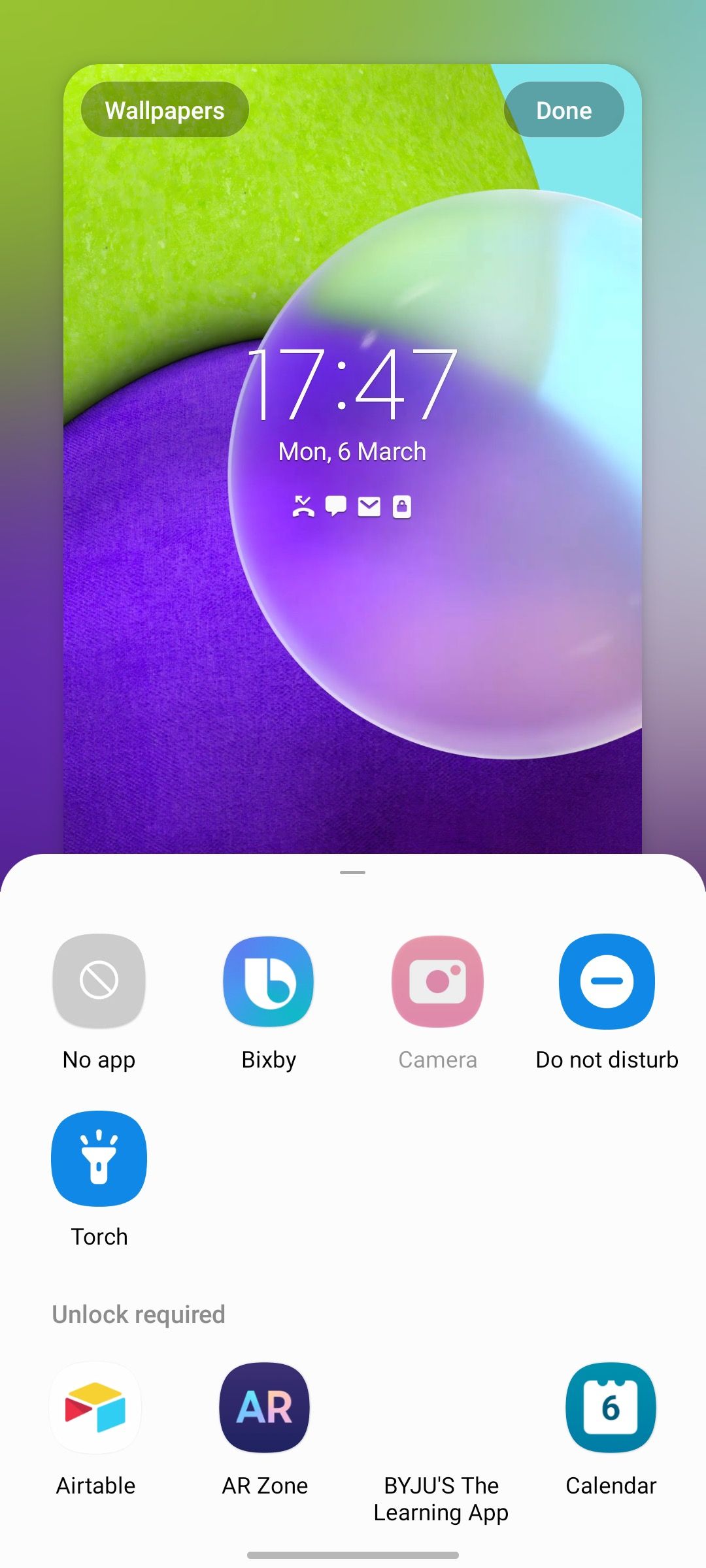
Some popular options for lock screen functionality include buttons for the flashlight or Do Not Disturb.
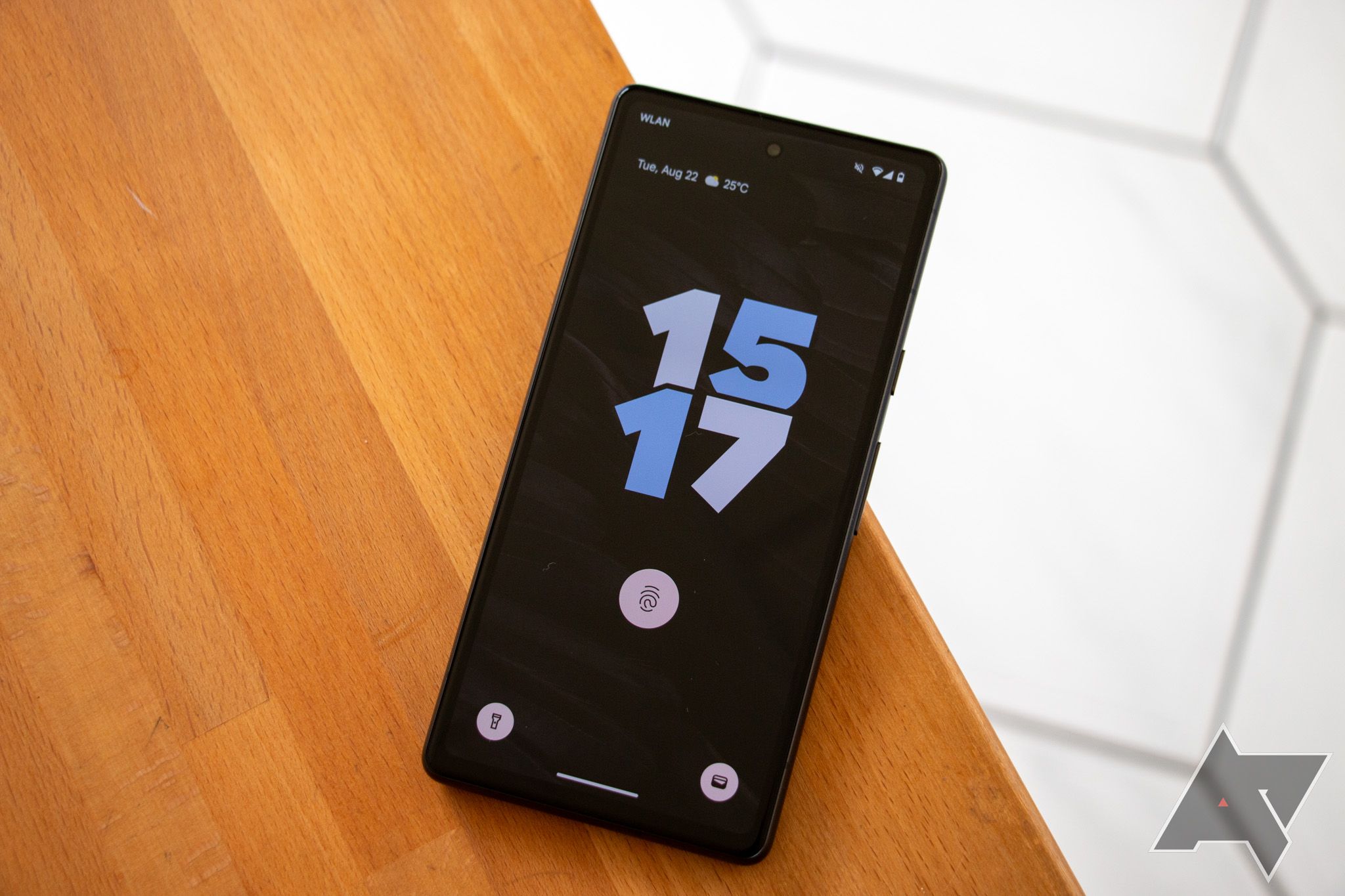
How to customize your Android 14 lock screen
Show off your personality without unlocking your phone
9 Show important information on your lock screen
Even though Google removed lock screen widgets in Android 5.0 Lollipop, Samsung brought them back in One UI 3 in 2020.
- Open Lock screen in device Settings (check the steps above).
- Select Widgets.
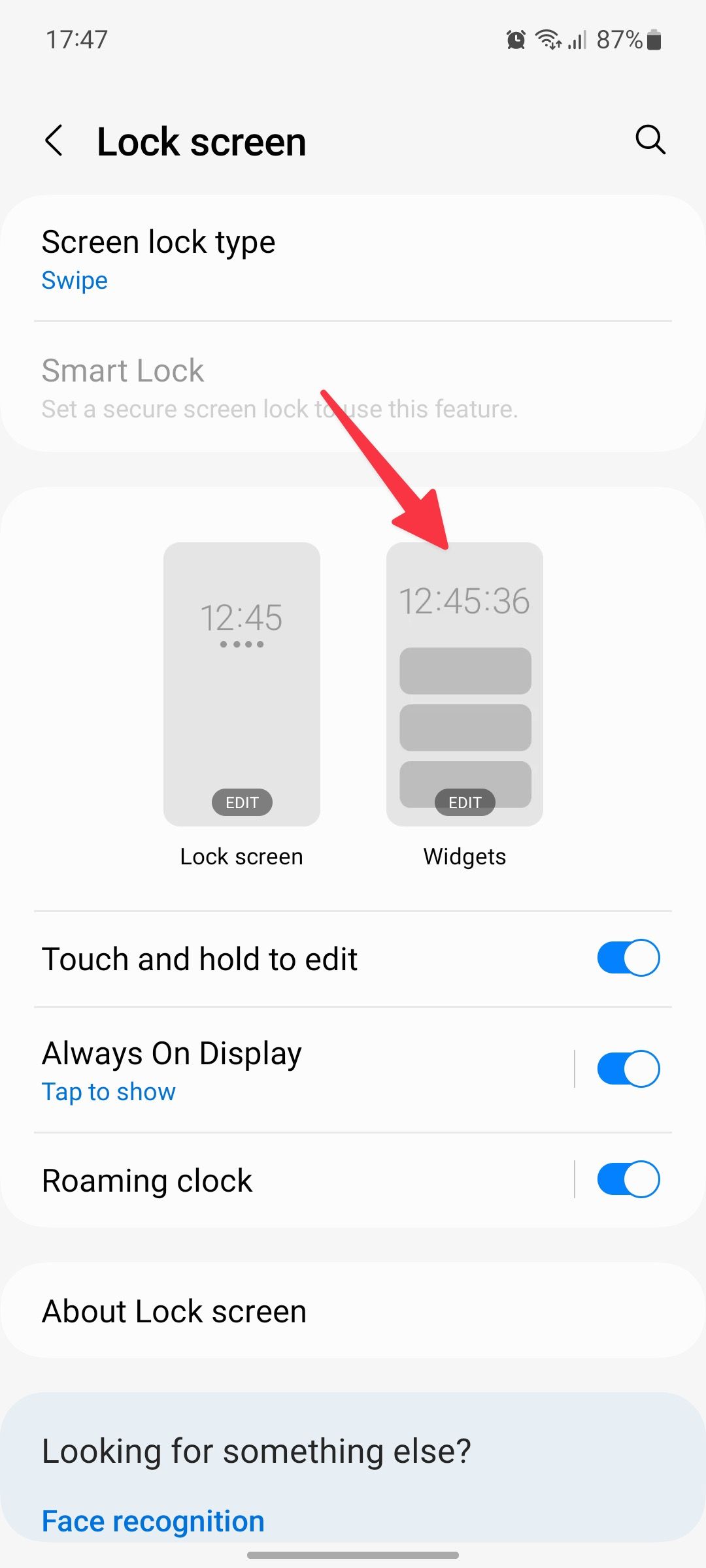
- Activate, deactivate, and reorder built-in widgets to your preference. You can choose from music, weather, calendar events for the day, your next alarm, Digital Wellbeing, your favorite Routines, and the voice recorder, but you can’t use any of the top third-party widgets.
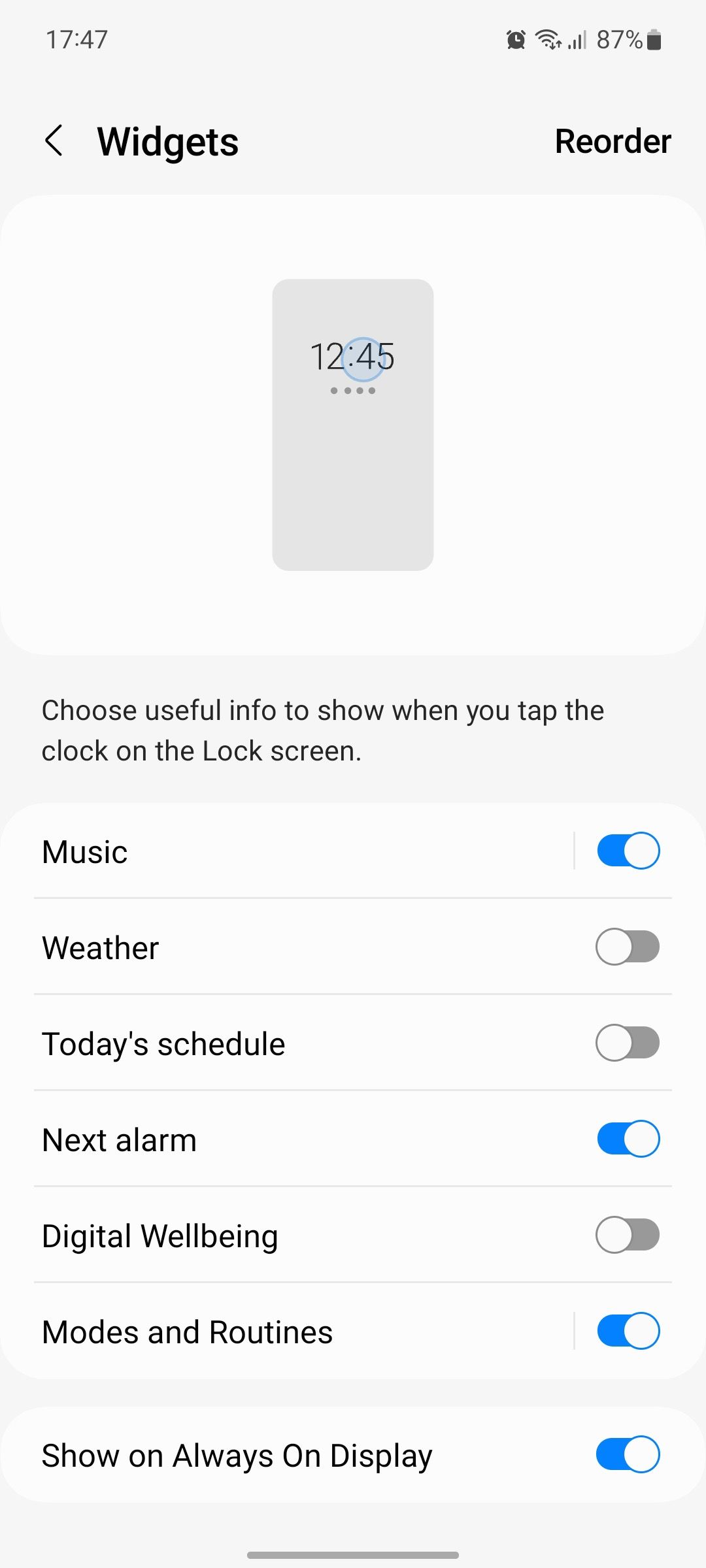
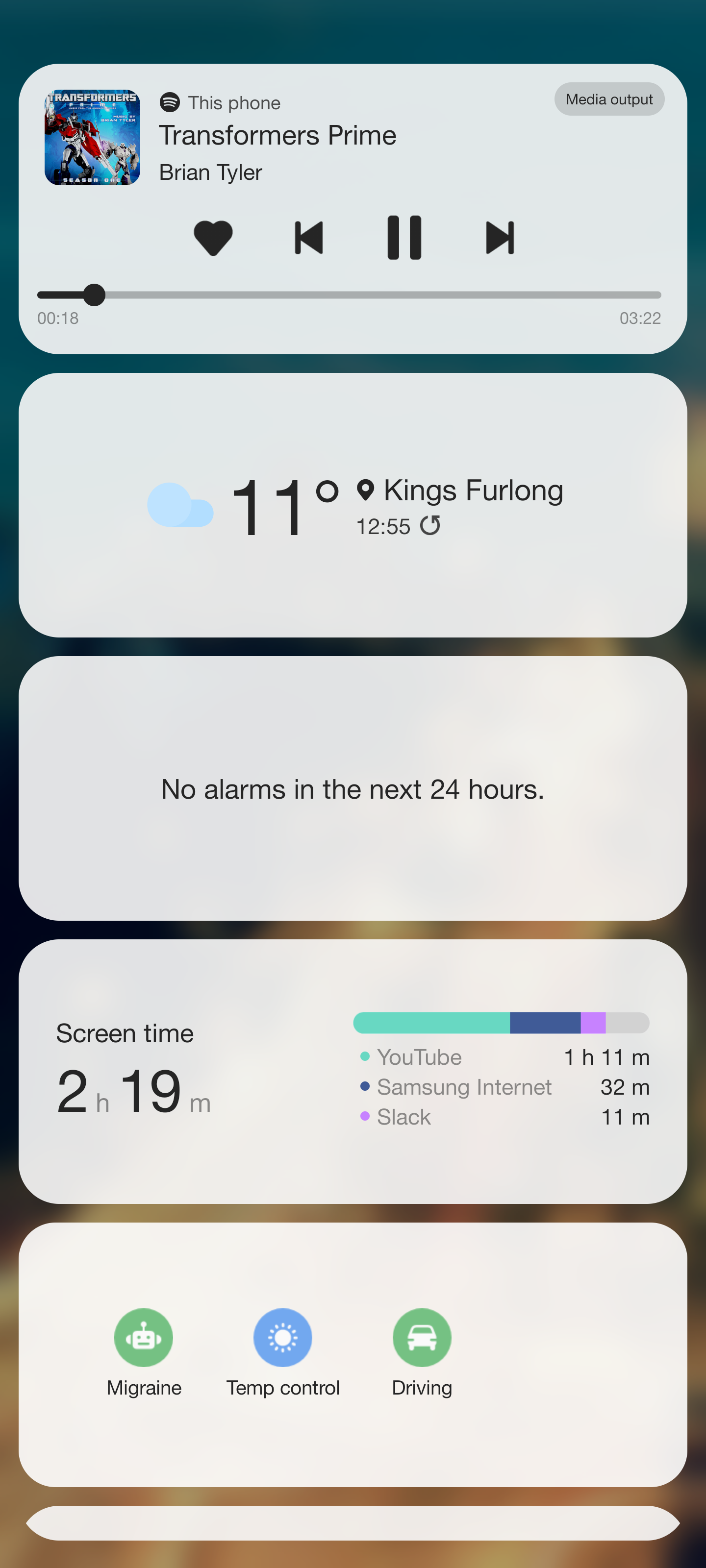
Samsung’s lock screen widgets might not be as versatile as those offered by the iPhone or what we had with Android KitKat. Still, it’s better than nothing, and looking at the calendar for the day without unlocking the phone is useful. You can’t use stacked widgets on the lock screen, though.
10 Customize the side key action
You can customize the side key to open your preferred app when you double-press it.
- Open Settings and scroll to Advanced features.
- Select Side key.
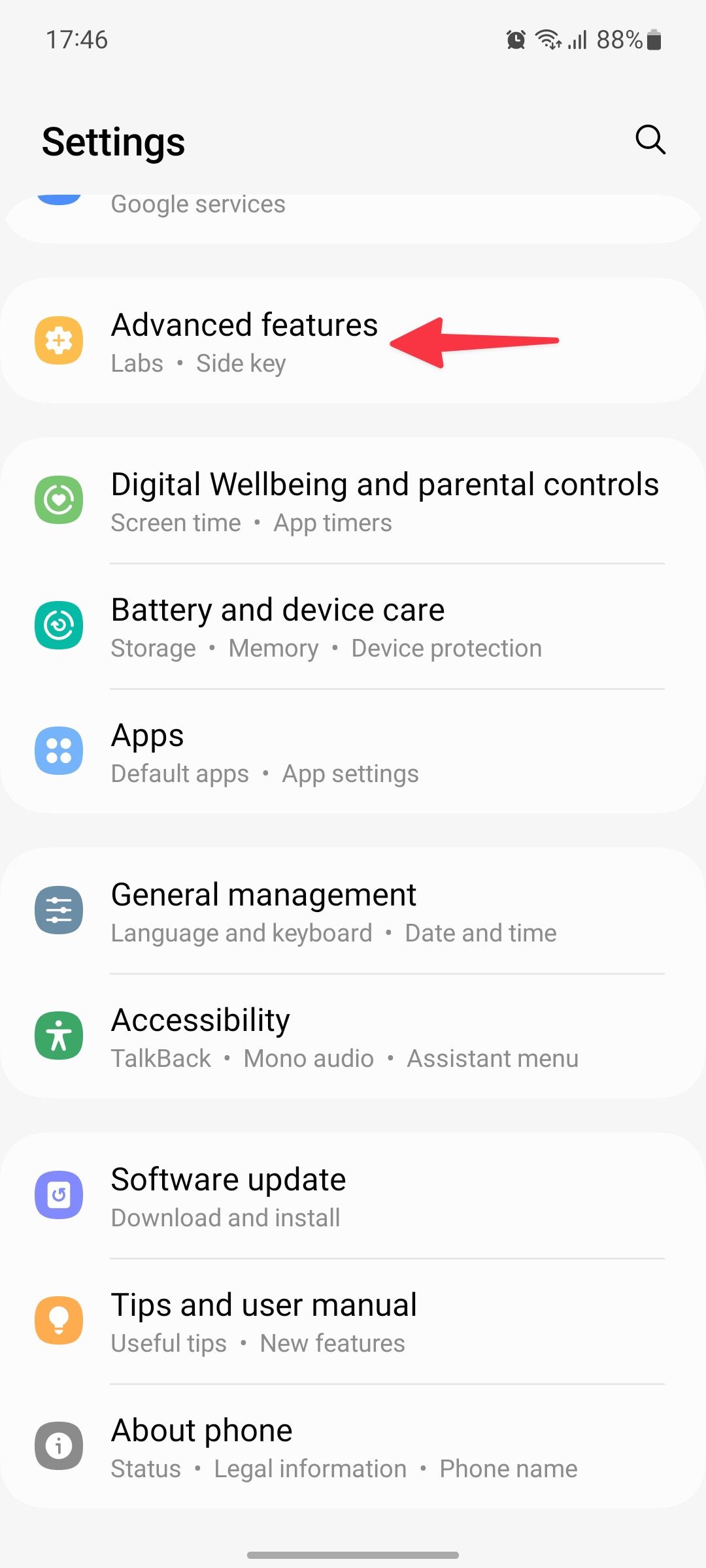
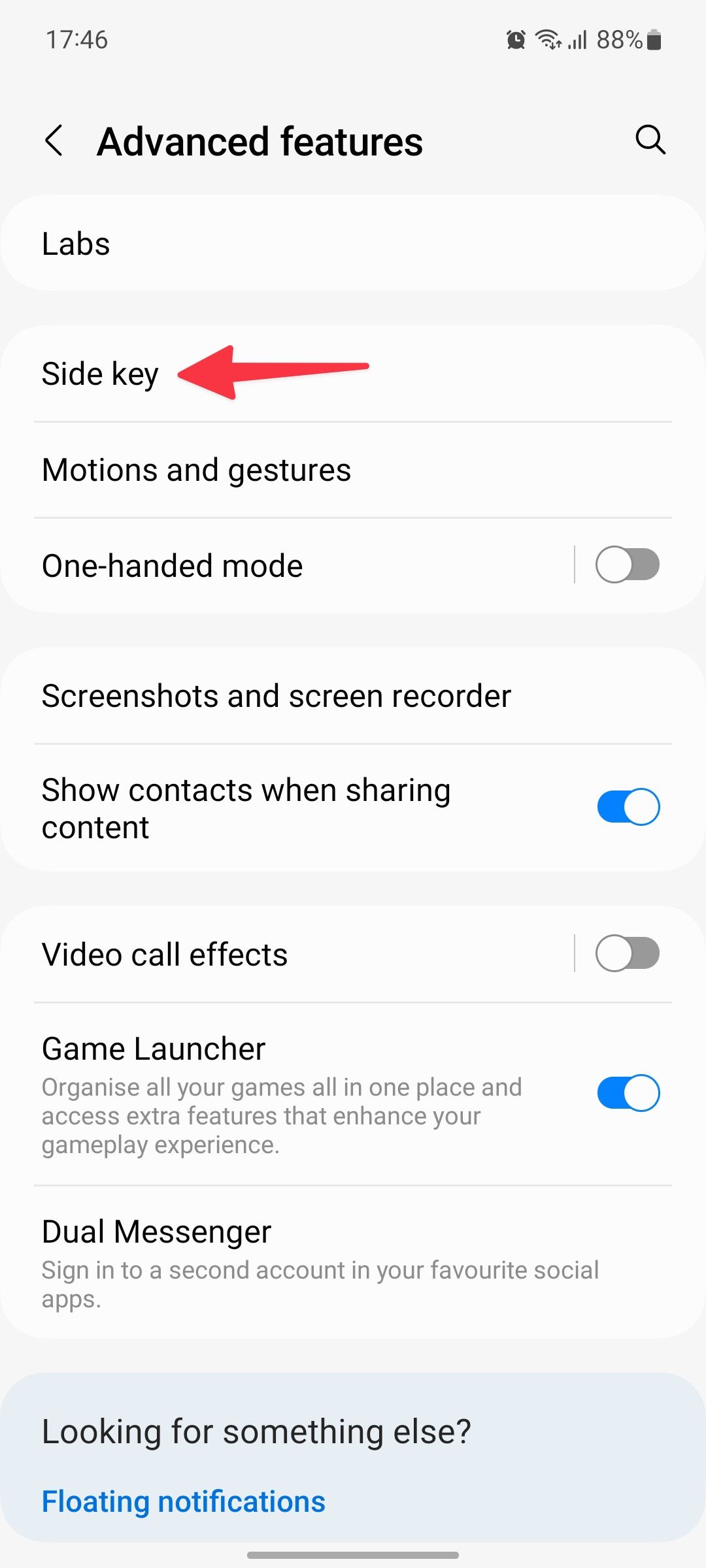
- Turn on the Double press toggle. You can quickly launch the camera, open Secure Folder, or set it to open an app of your choice.
- You can also wake up Bixby or open the Power off menu by holding the side key.
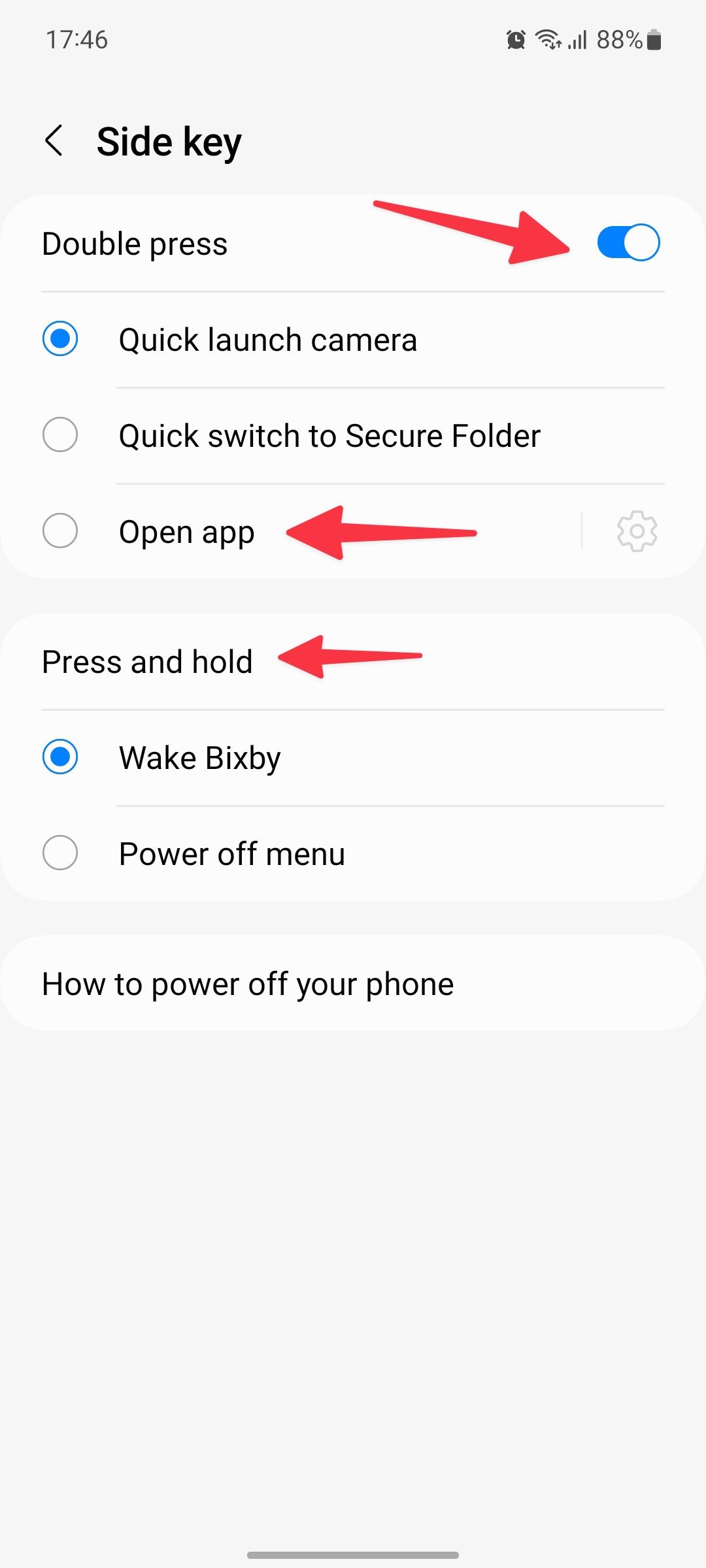
11 Use Dual Messenger to message with multiple accounts
Apps like WhatsApp and Facebook don’t make it easy to use multiple accounts. You can check and activate supported social media apps to sign in to a second account.
- Go to Advanced features in Samsung Settings.
- Select Dual Messenger.
- Supported apps appear after you install them. Turn on the toggle beside your preferred app and install a second copy on your Samsung phone.
- Select Use separate contact list if you want to use a separate list of contacts in your second copy of the app.
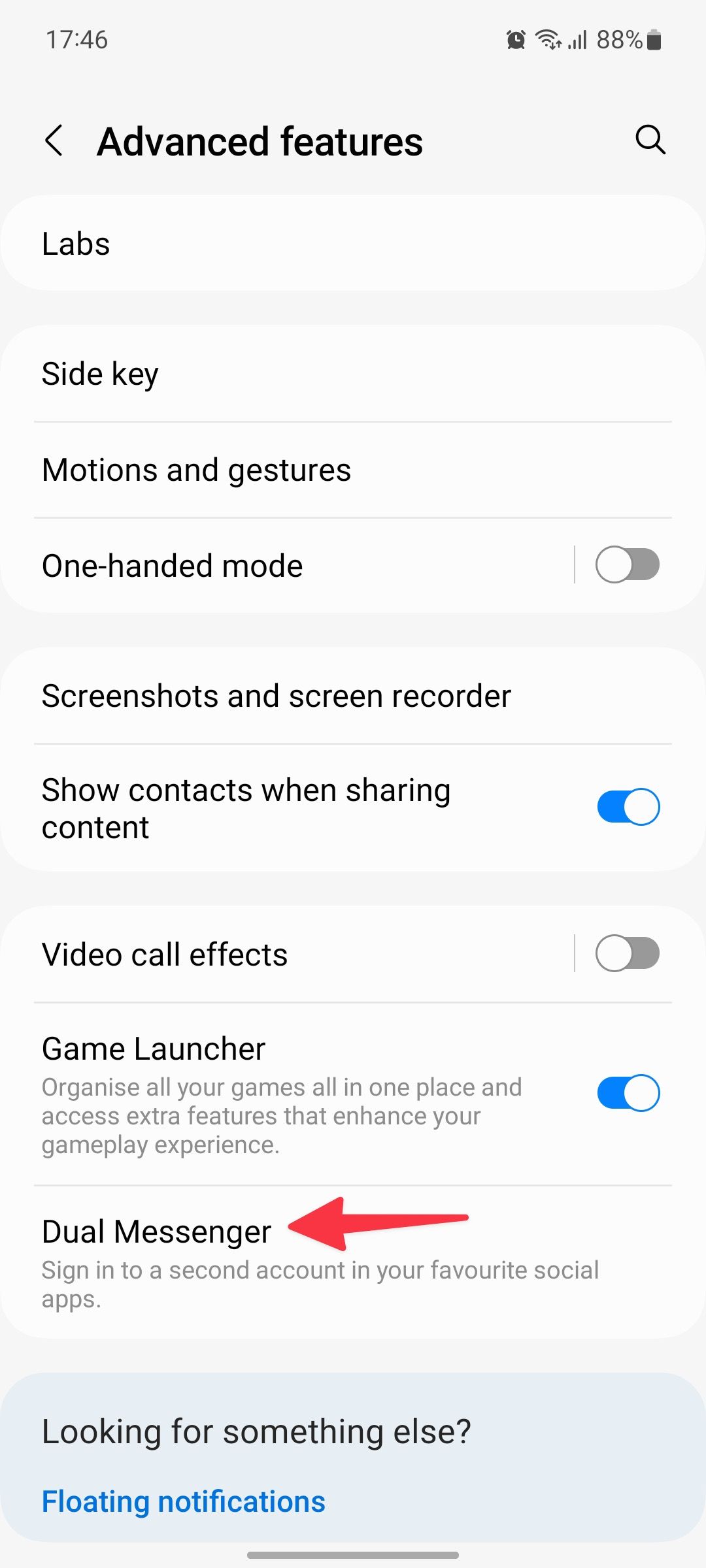
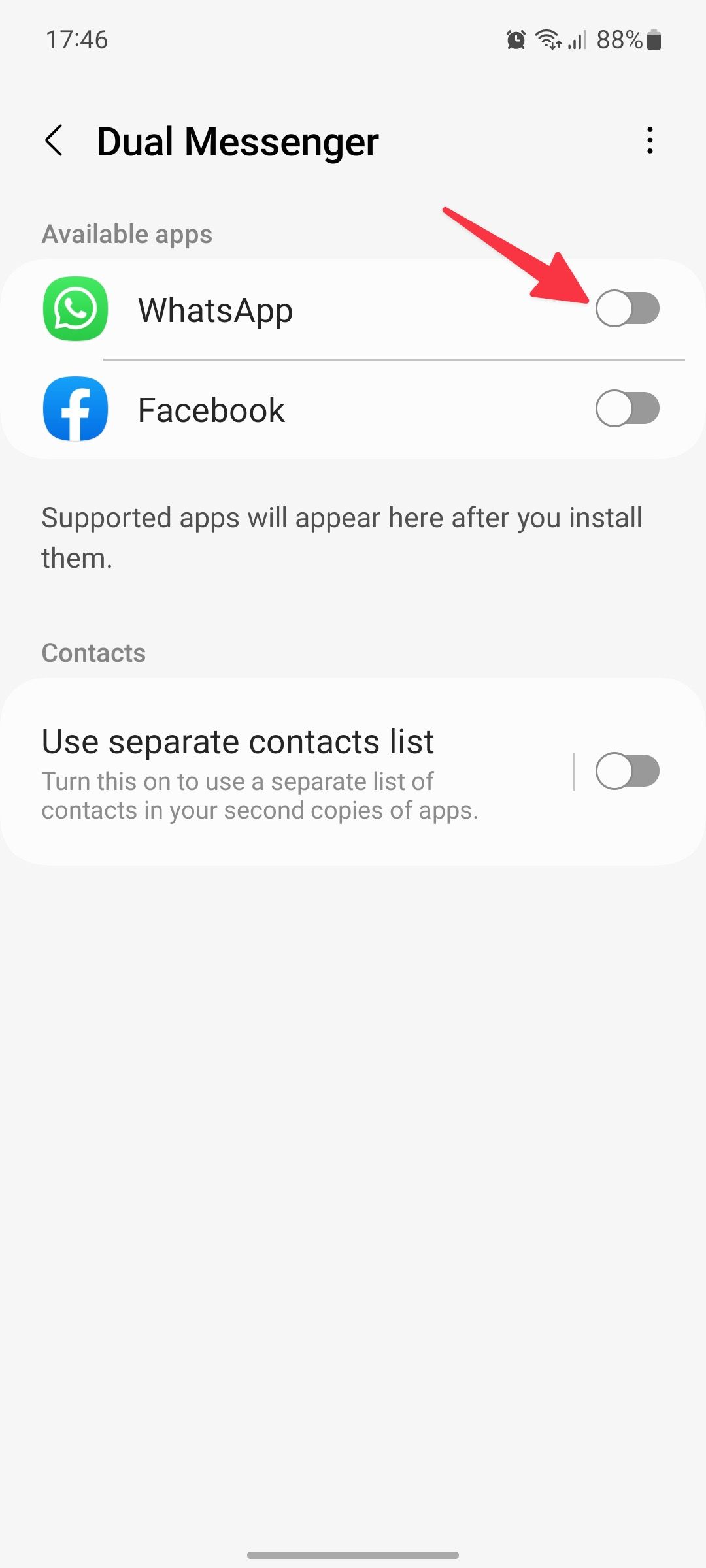
- Open the second social app and set it up with your account details.
If you delete the first messenger app, the second messenger app is deleted automatically.
12 Hide apps and games
If you don’t want your little ones to explore work apps or addictive games, use the steps below to hide them from your home screen and apps menu.
- Long tap on the home screen and select Settings.
- Select Hide apps on Home and Apps screens.
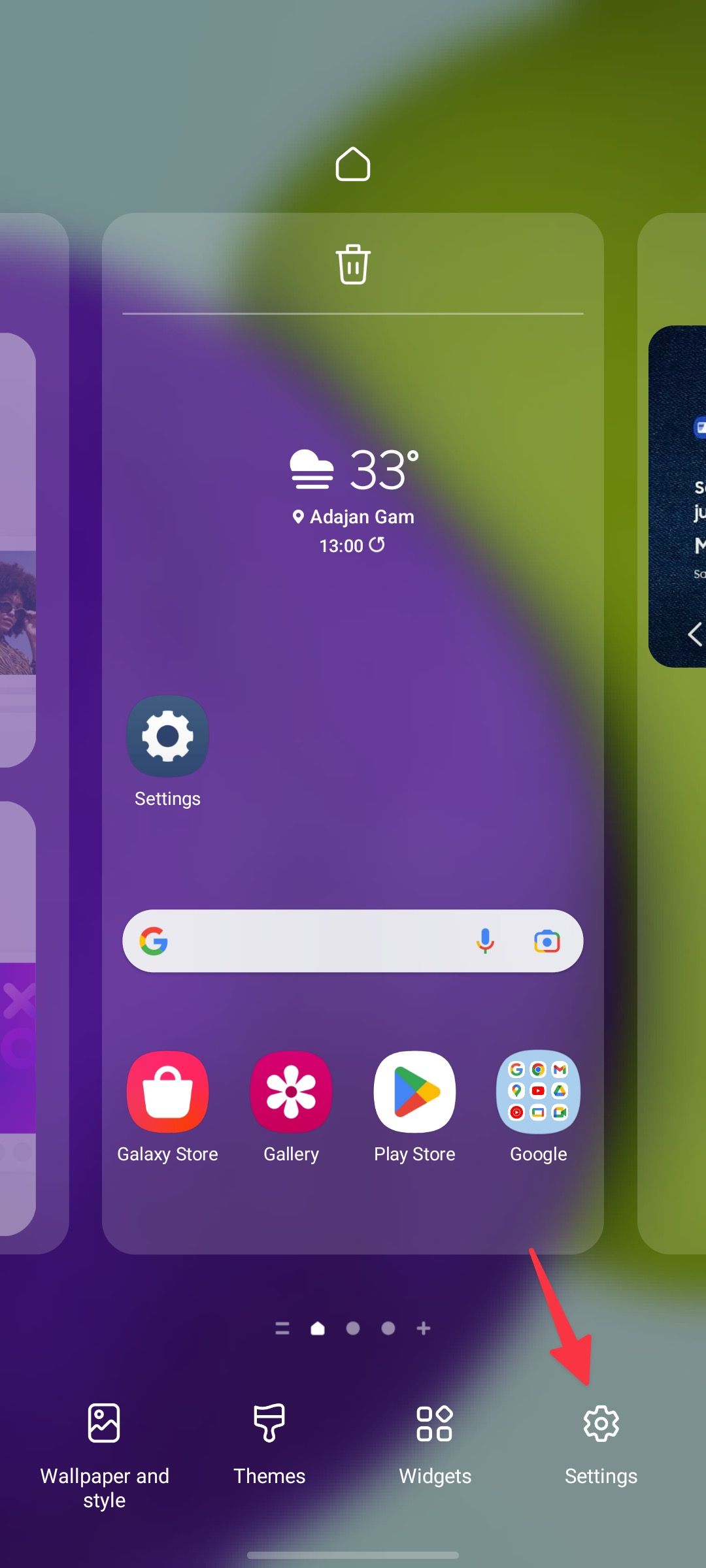
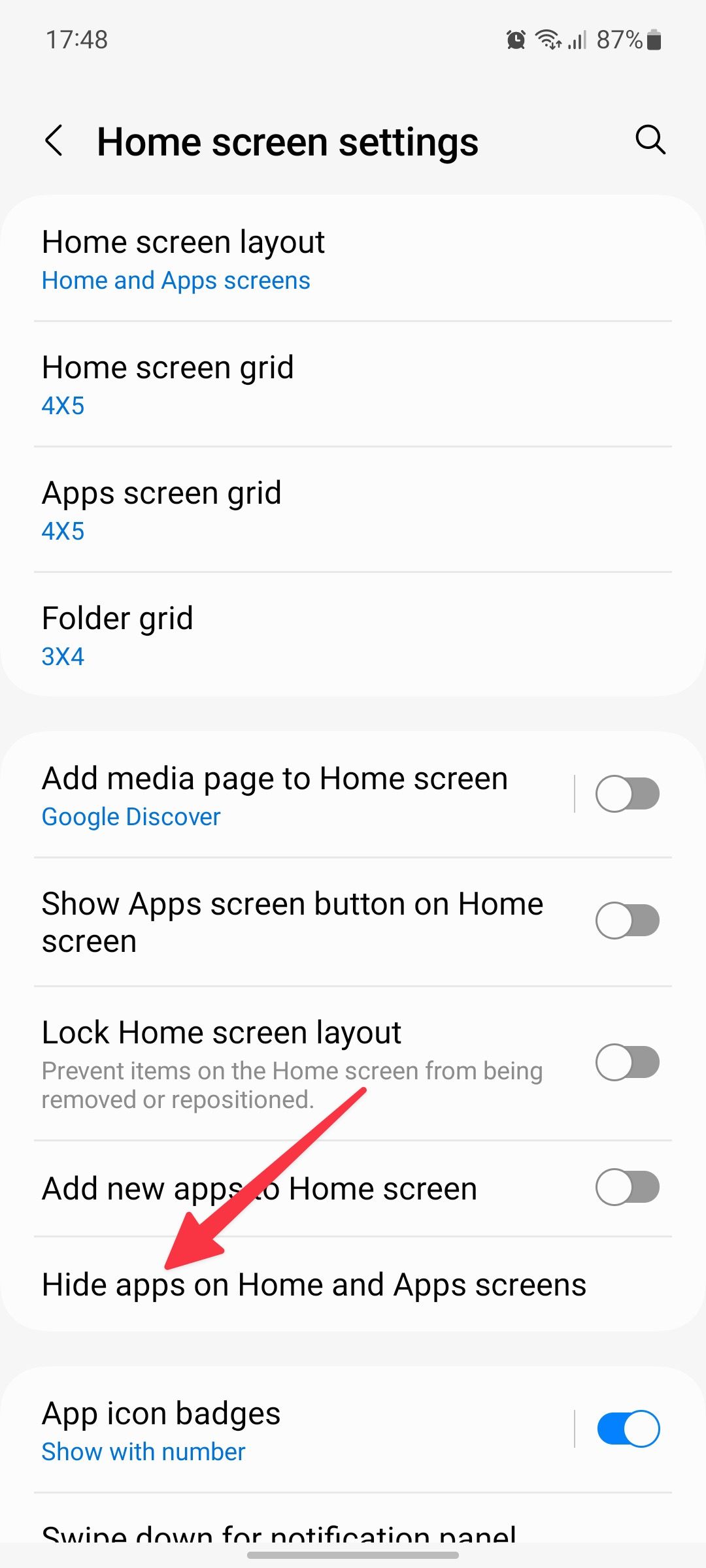
- Select the apps you want to hide and tap Done.
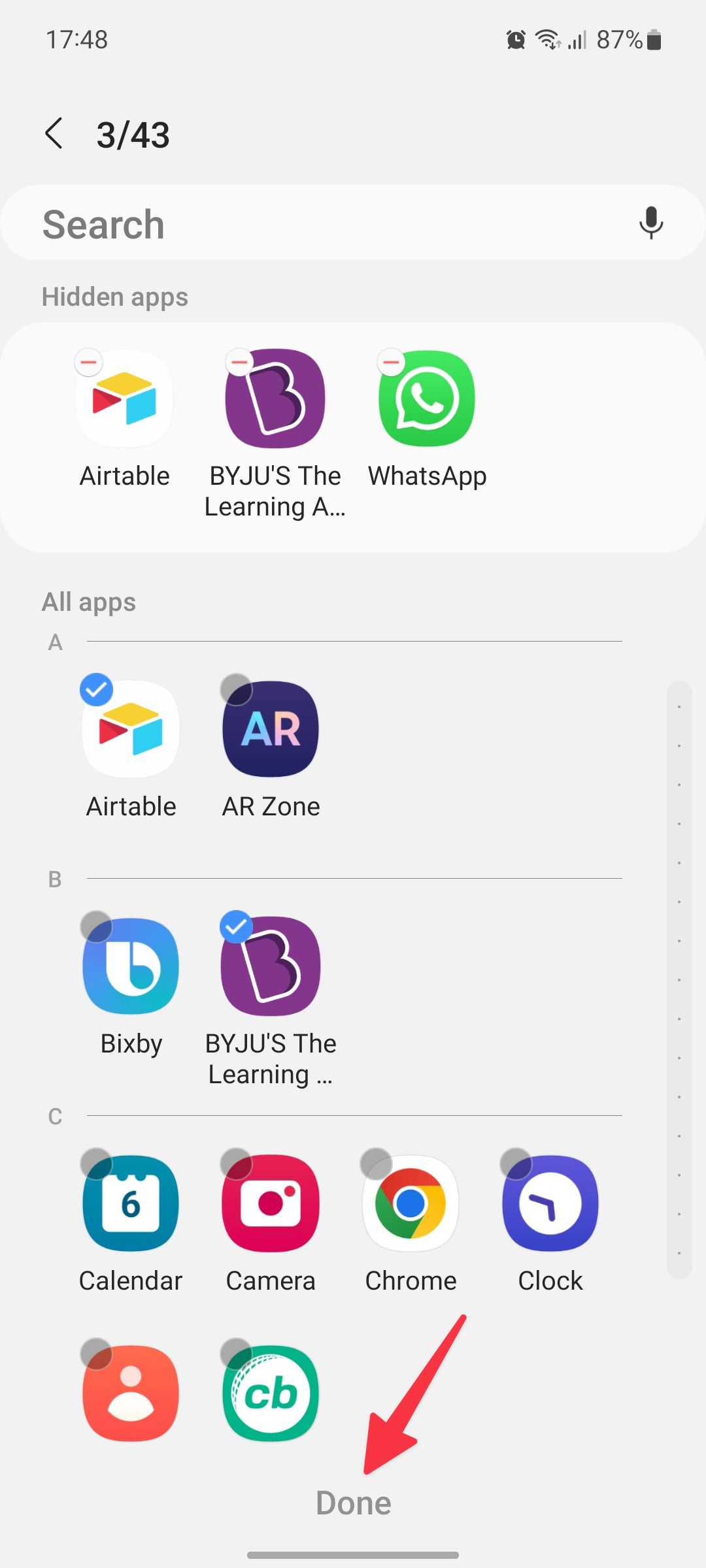
Explore Samsung One UI
There’s more to discover about One UI, so take your time to explore every part of your phone or tablet. If you don’t know where to start, follow our guide on setting up the perfect home screen.
Source link


